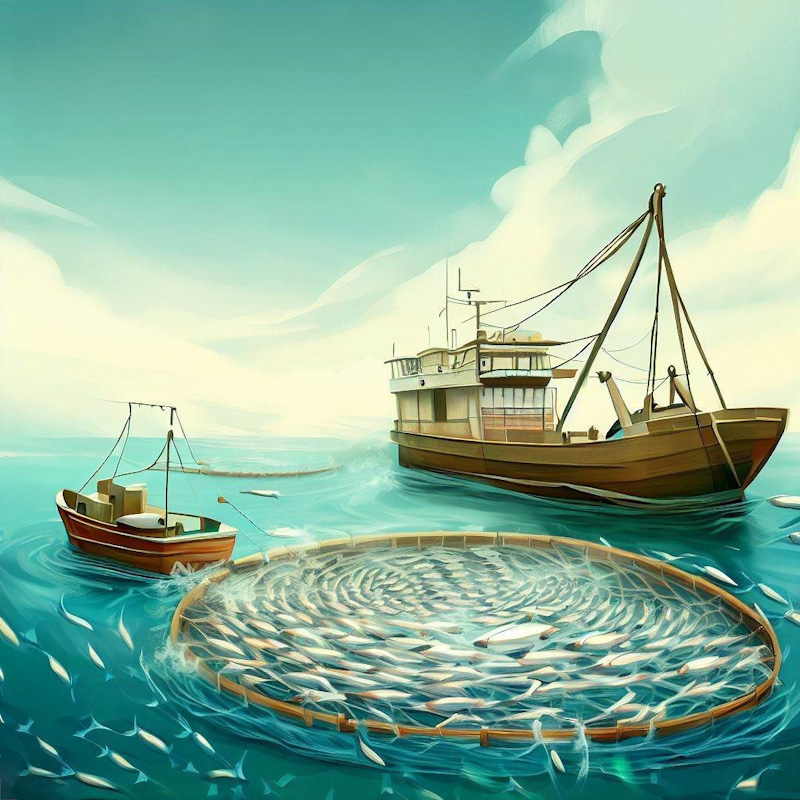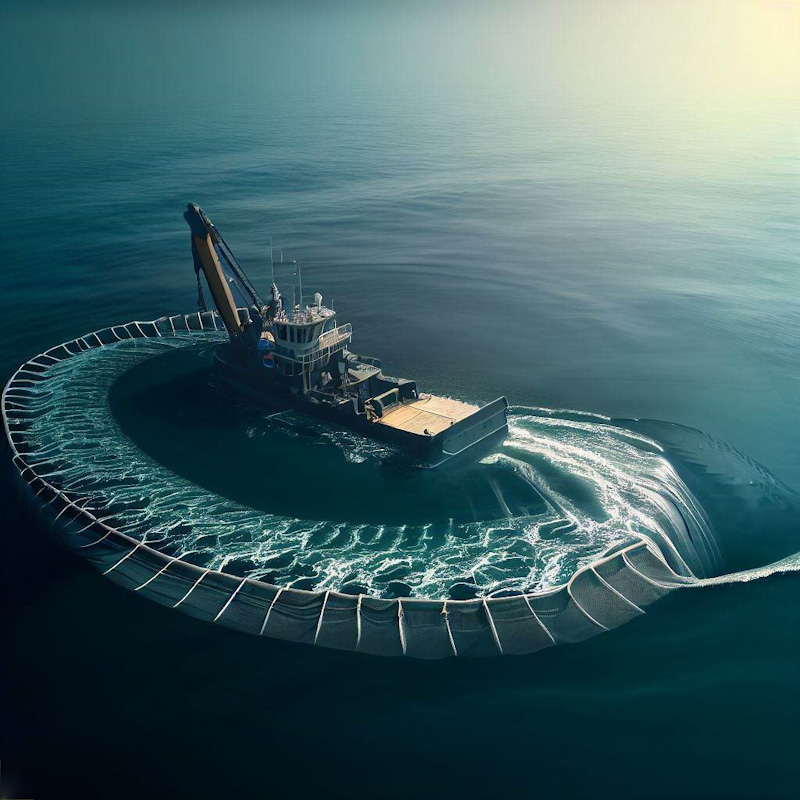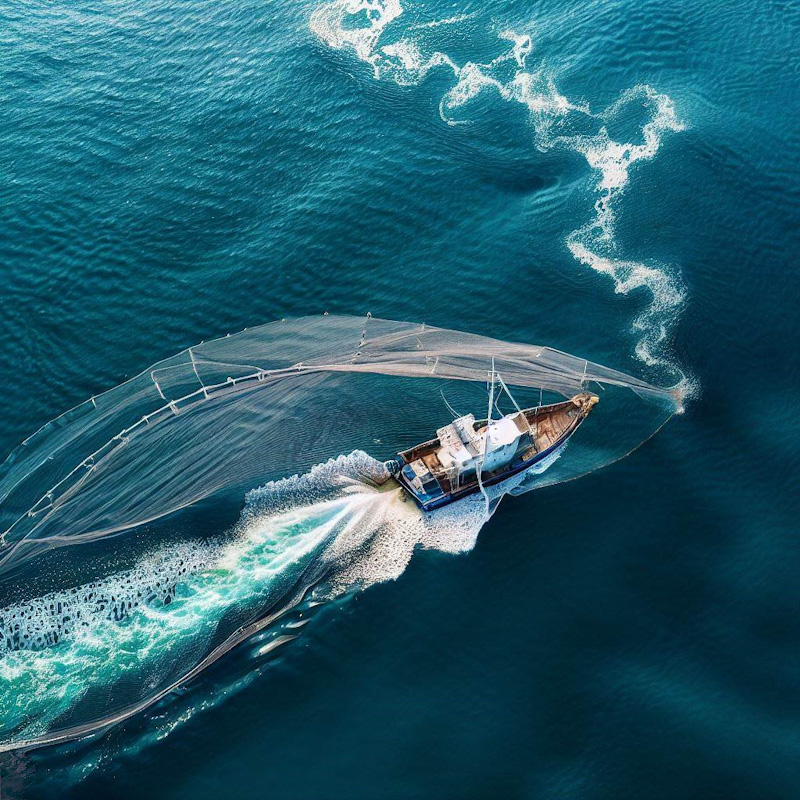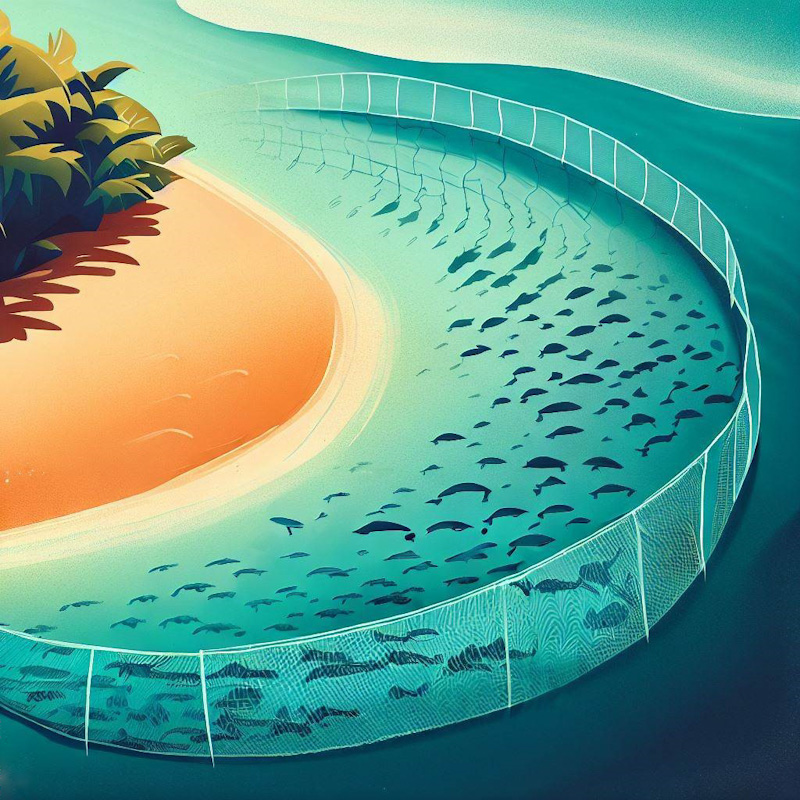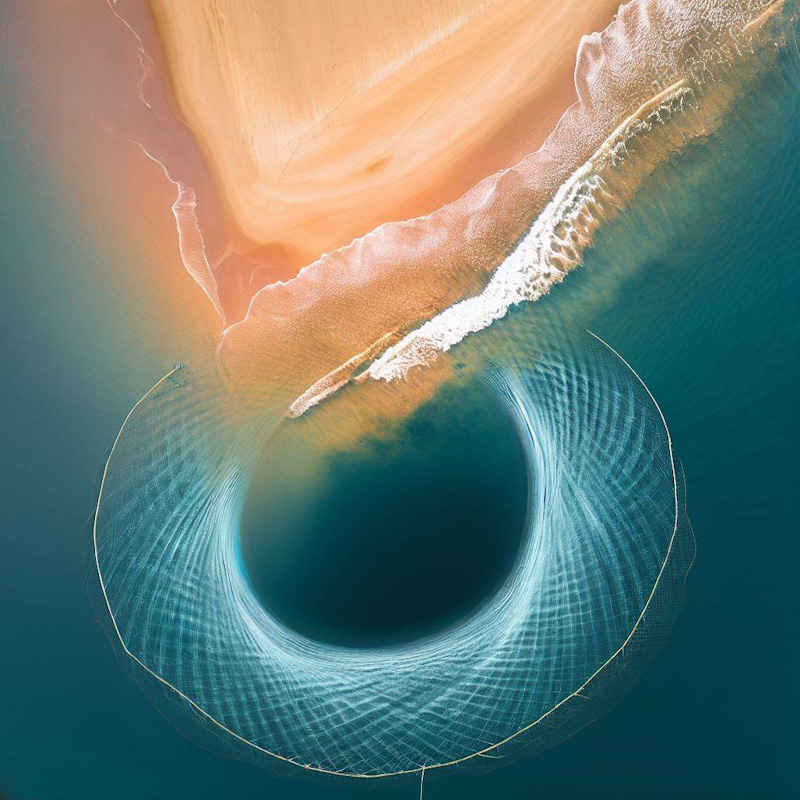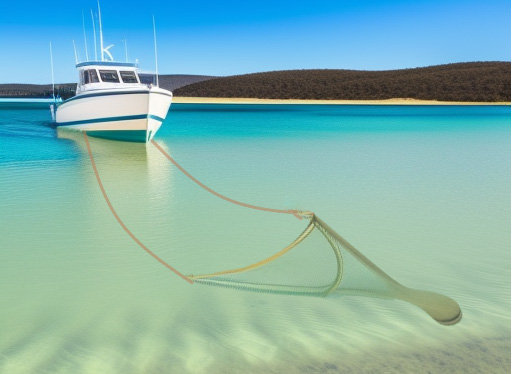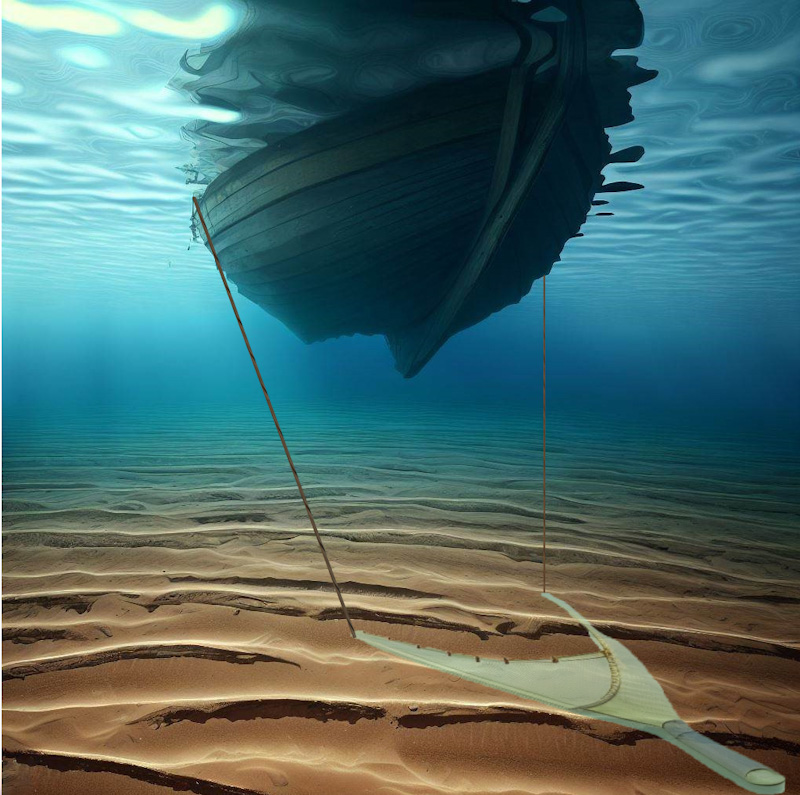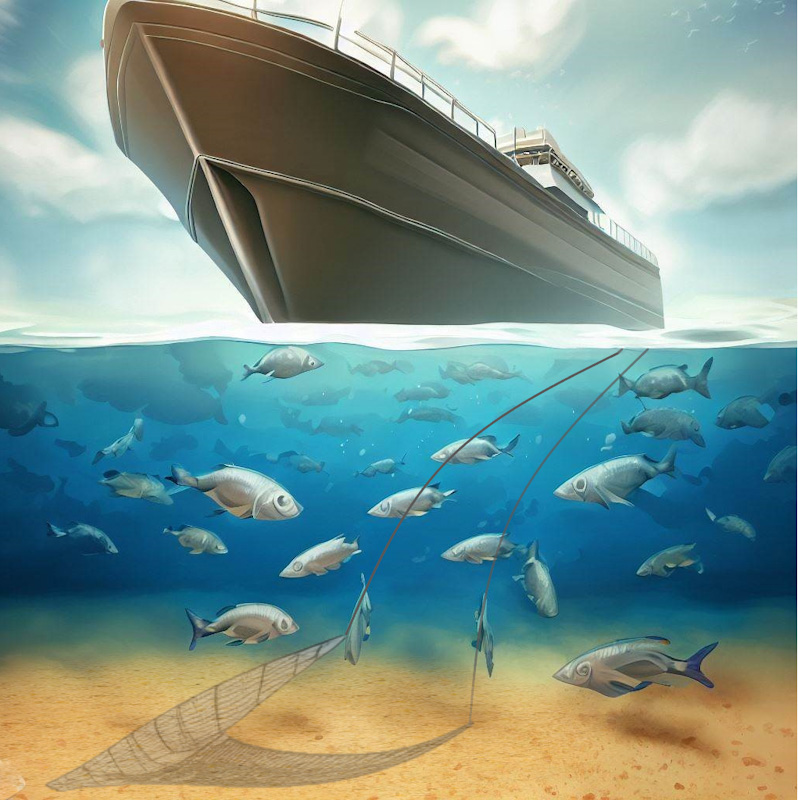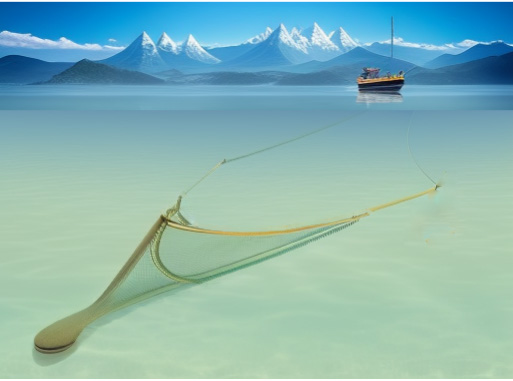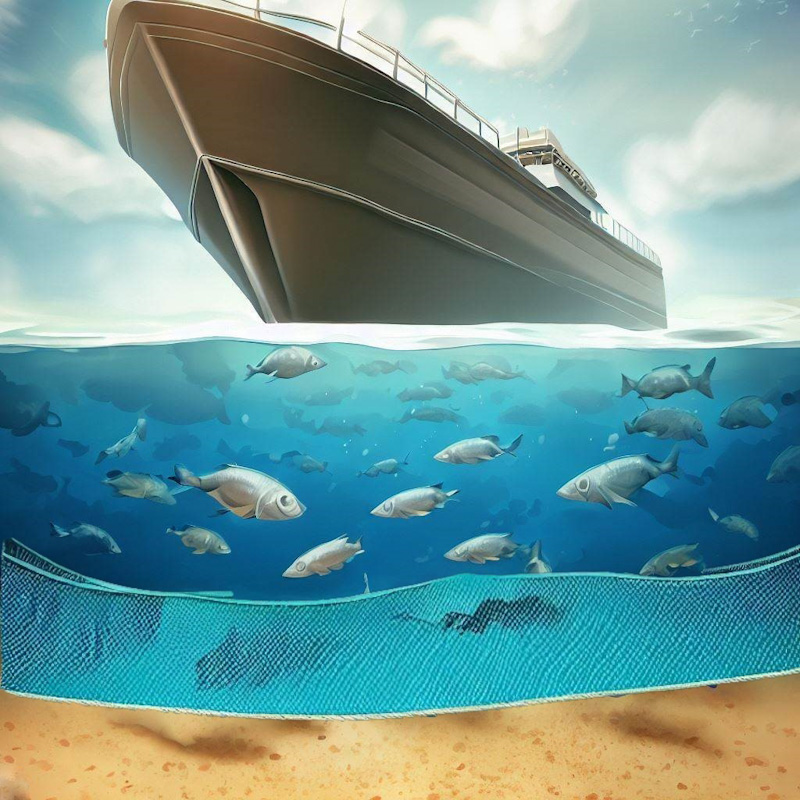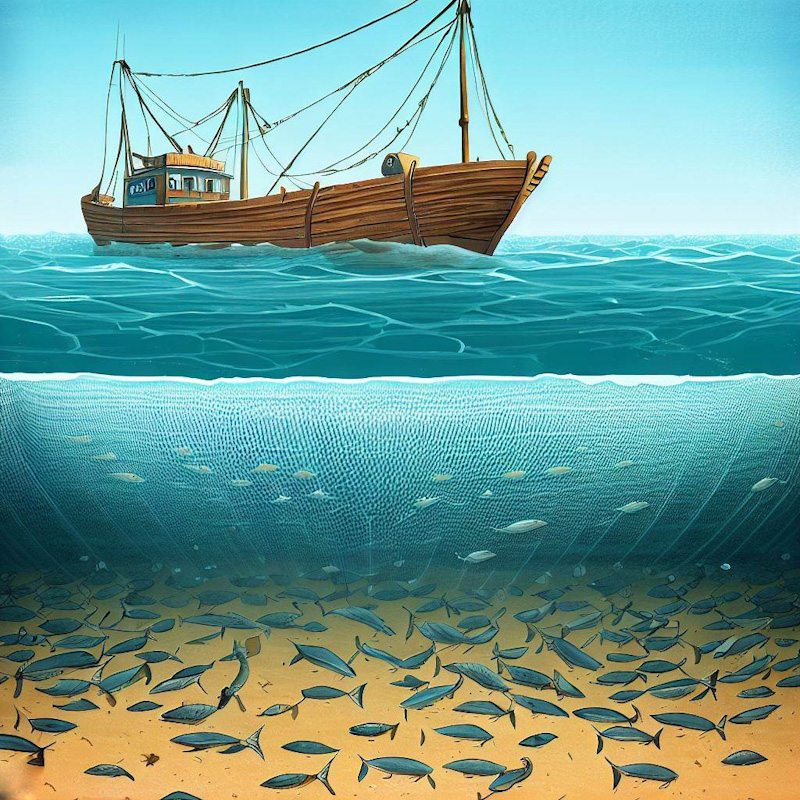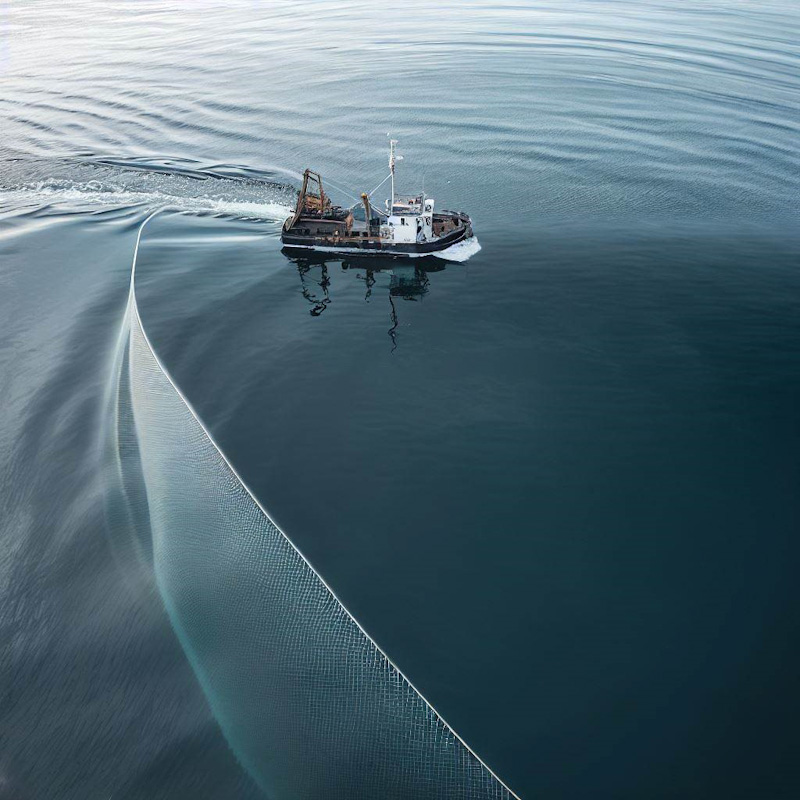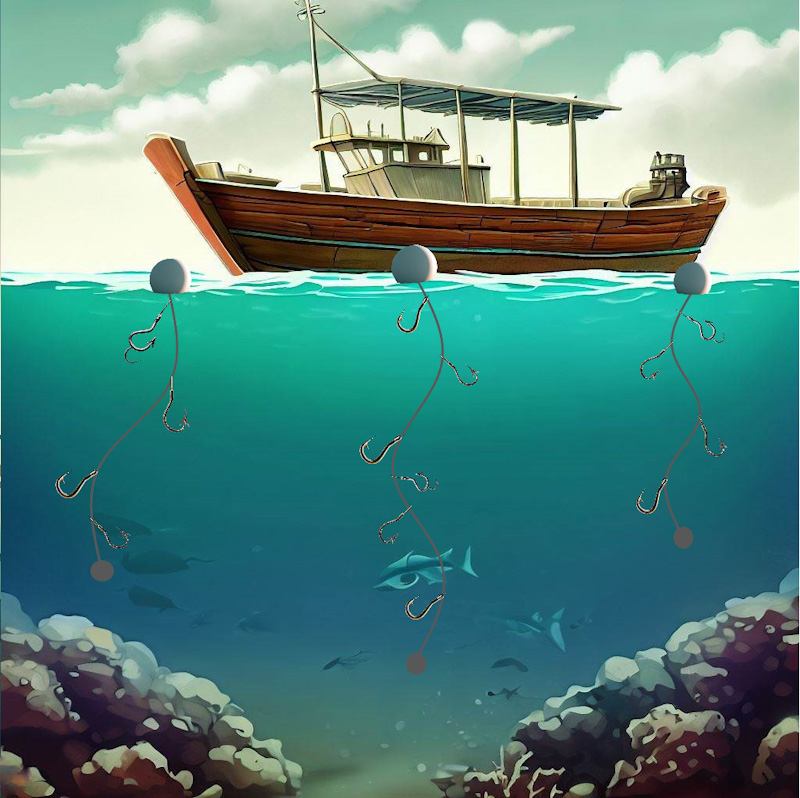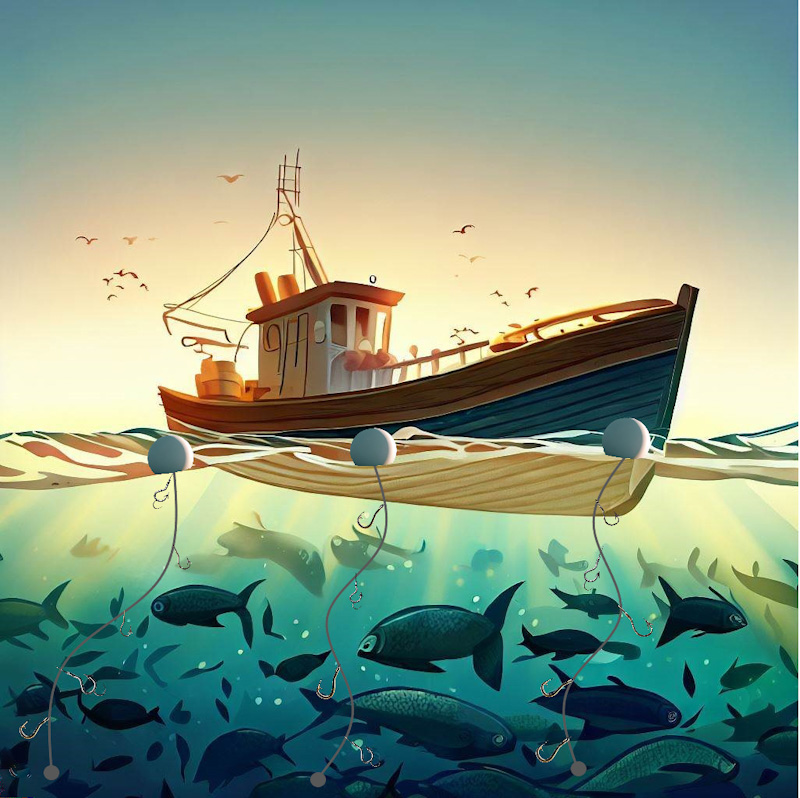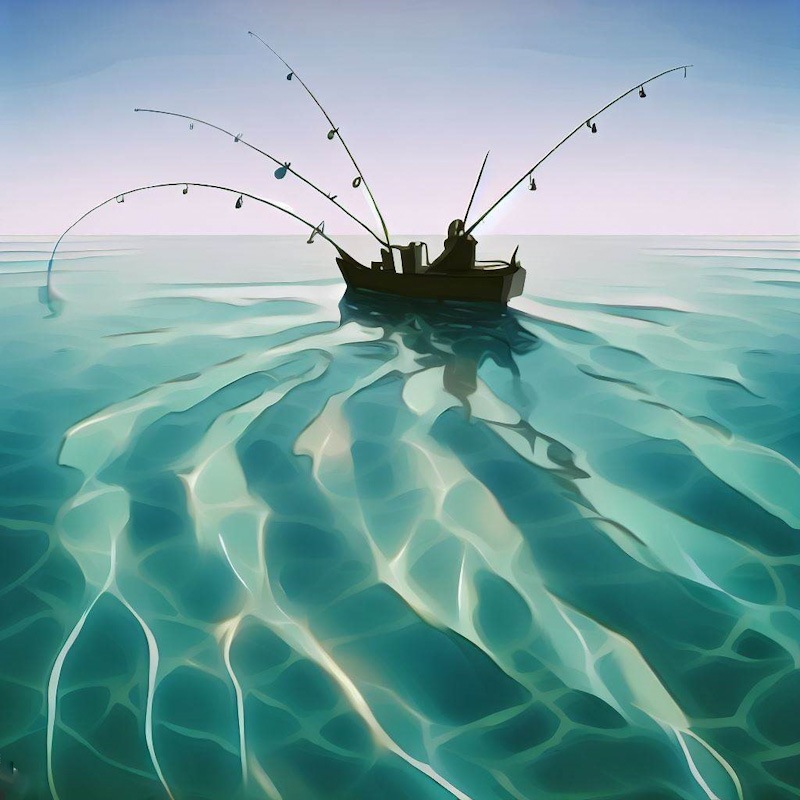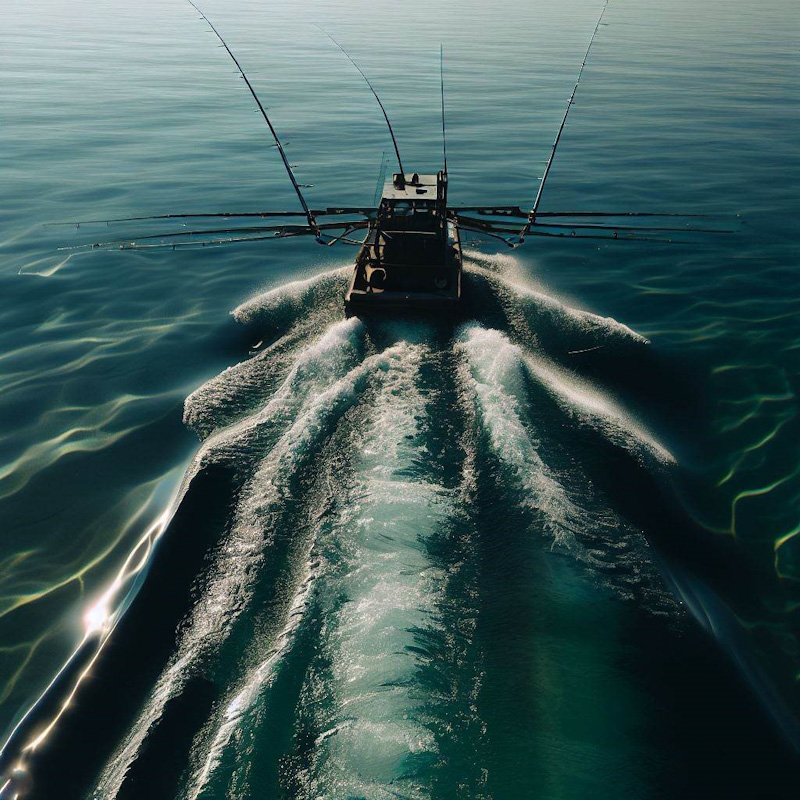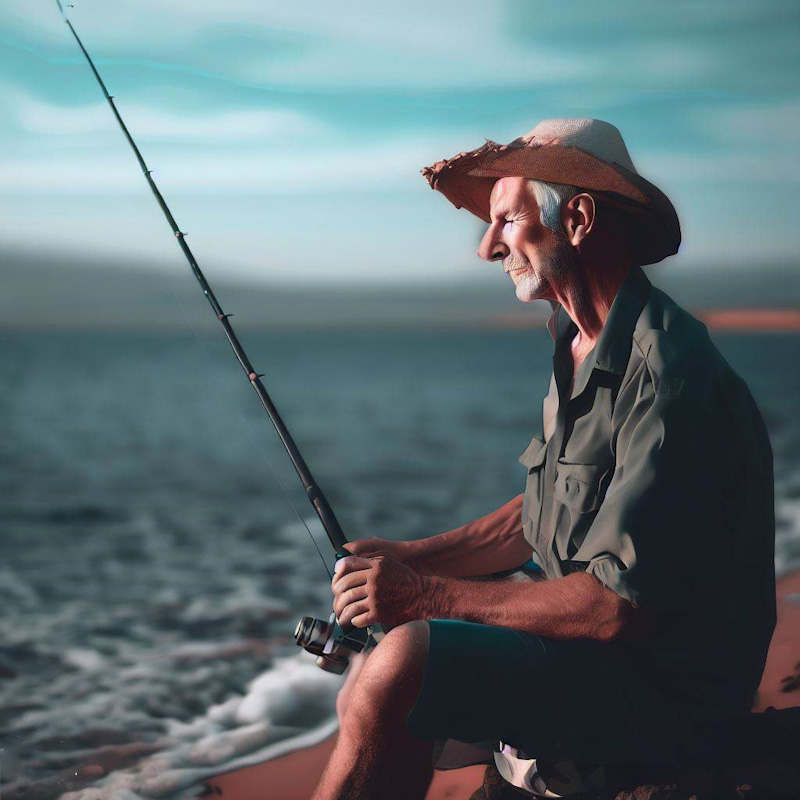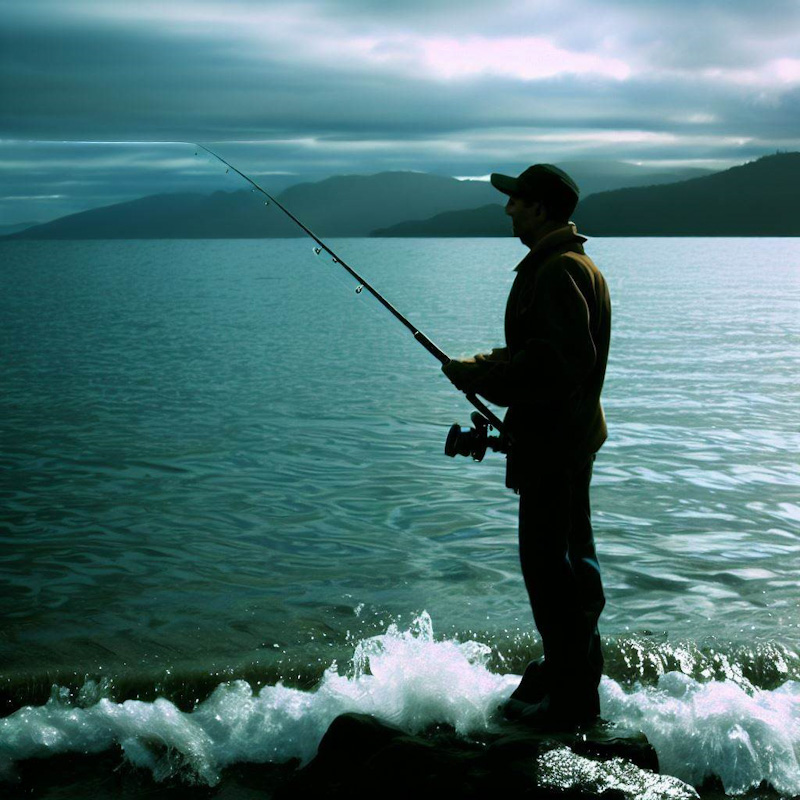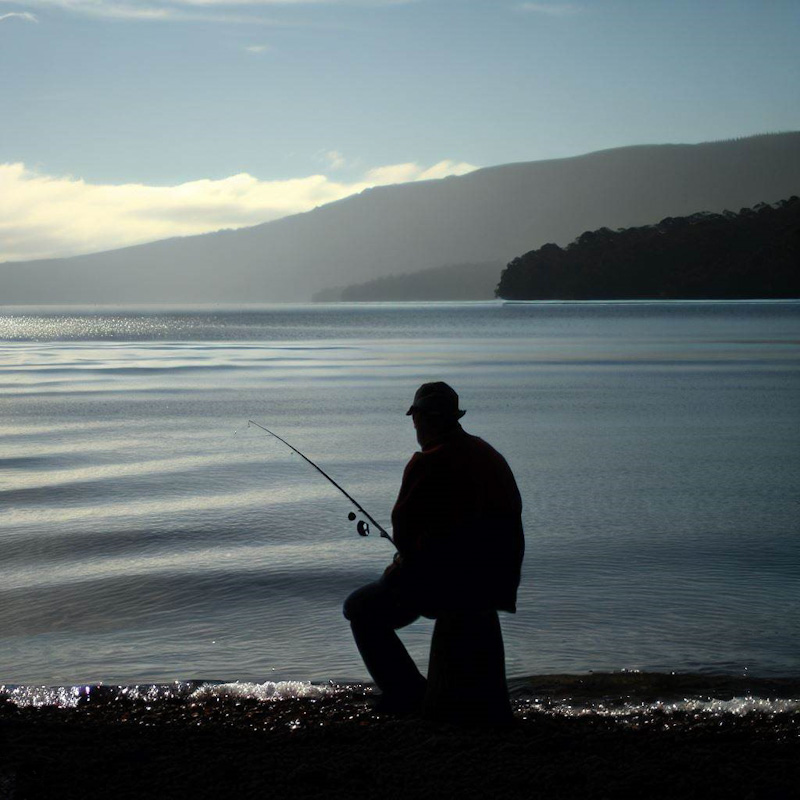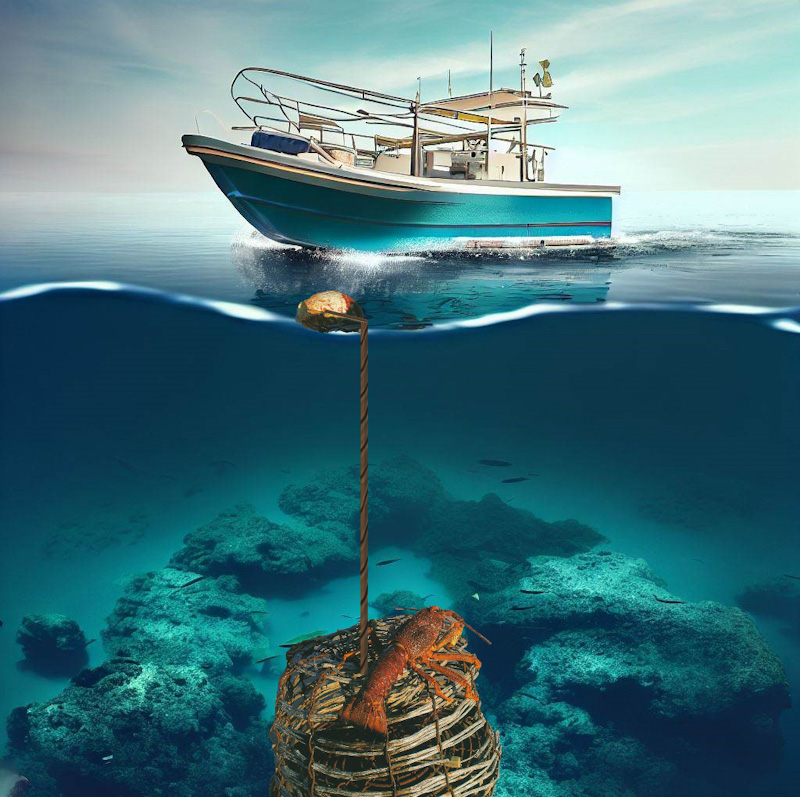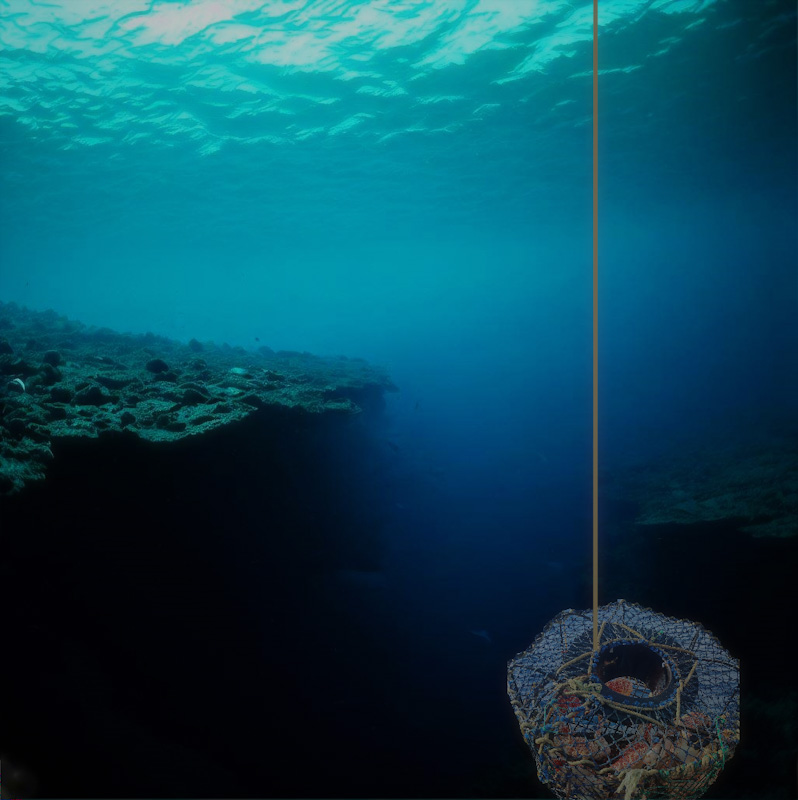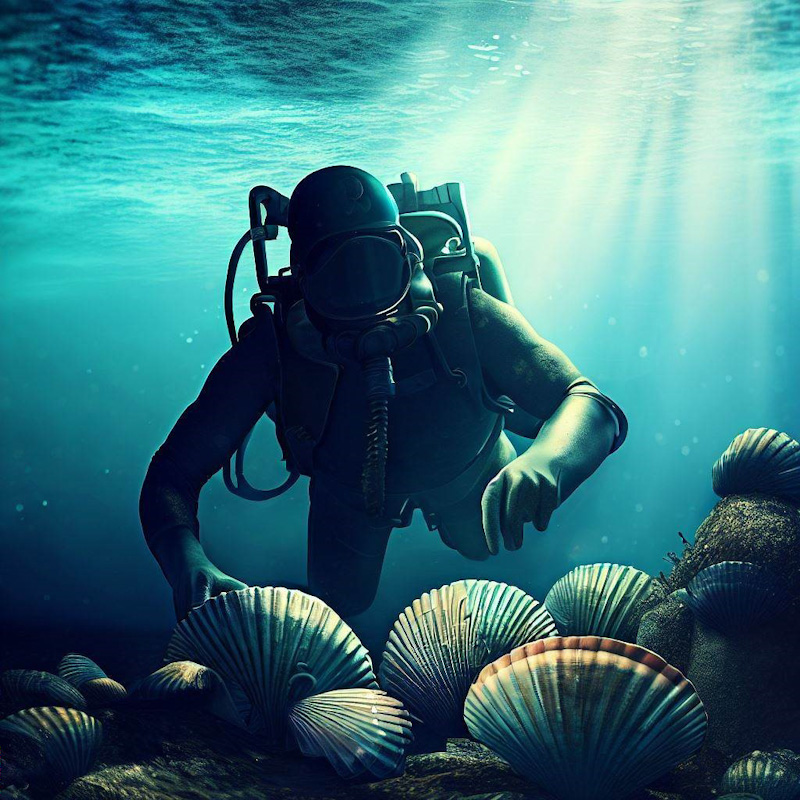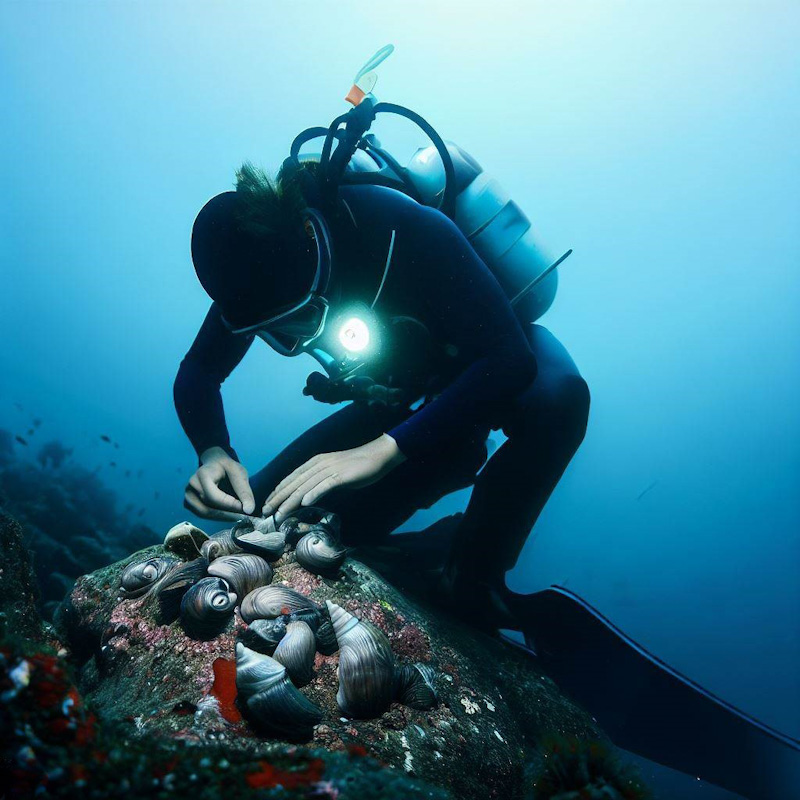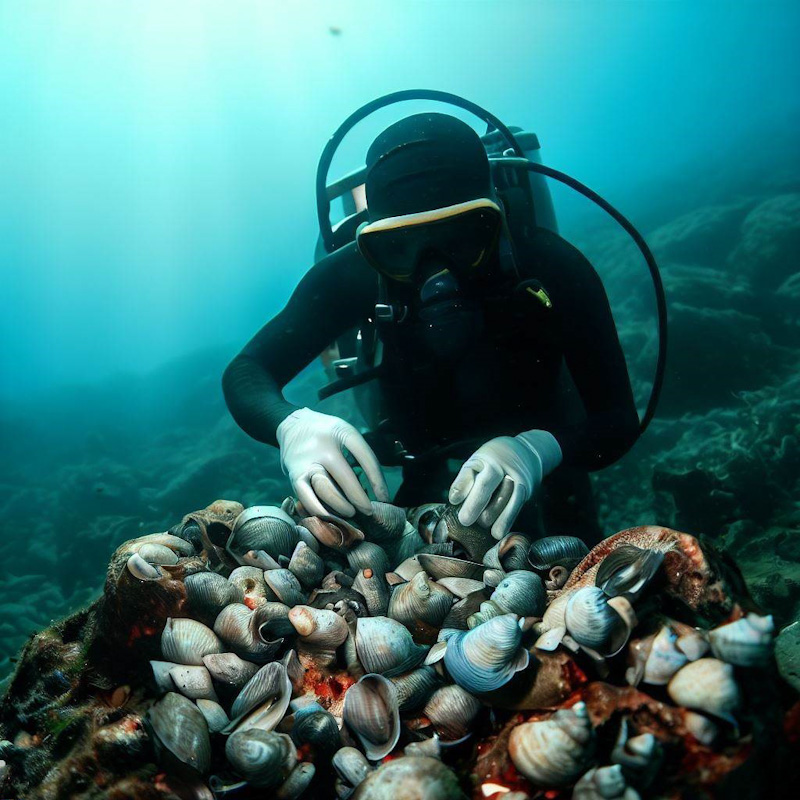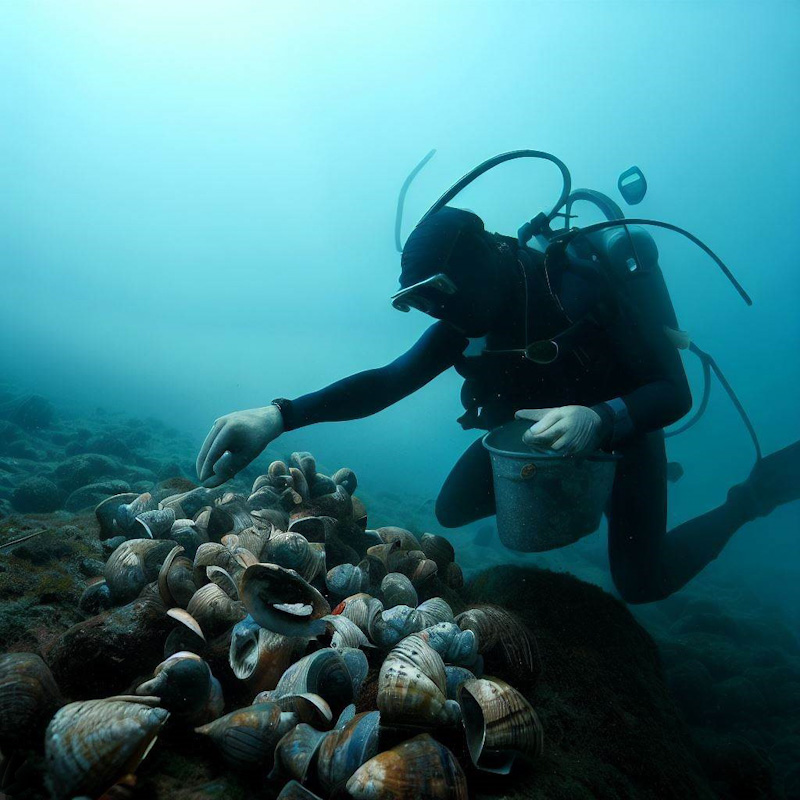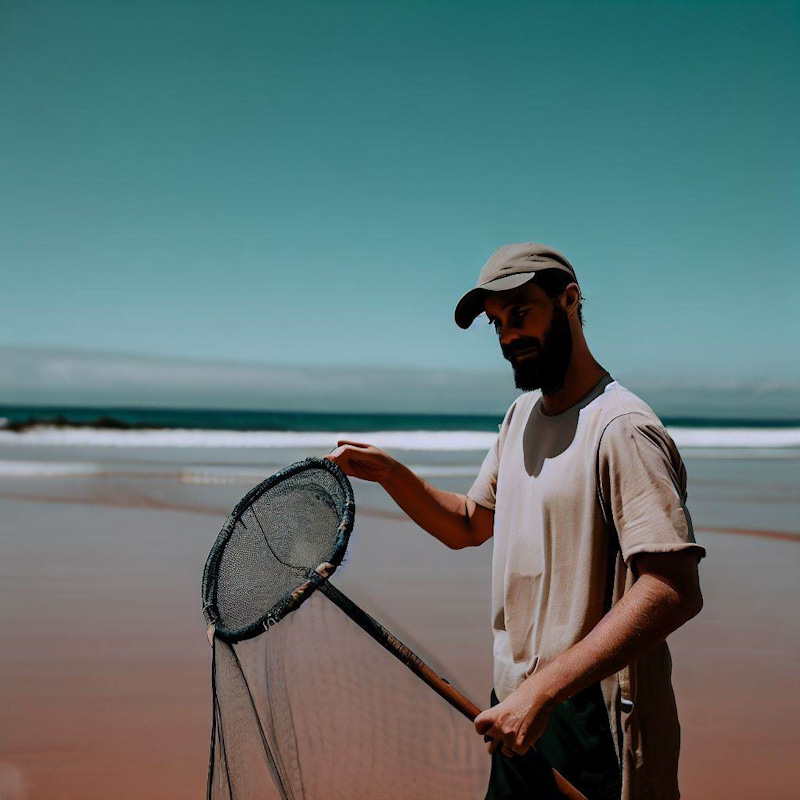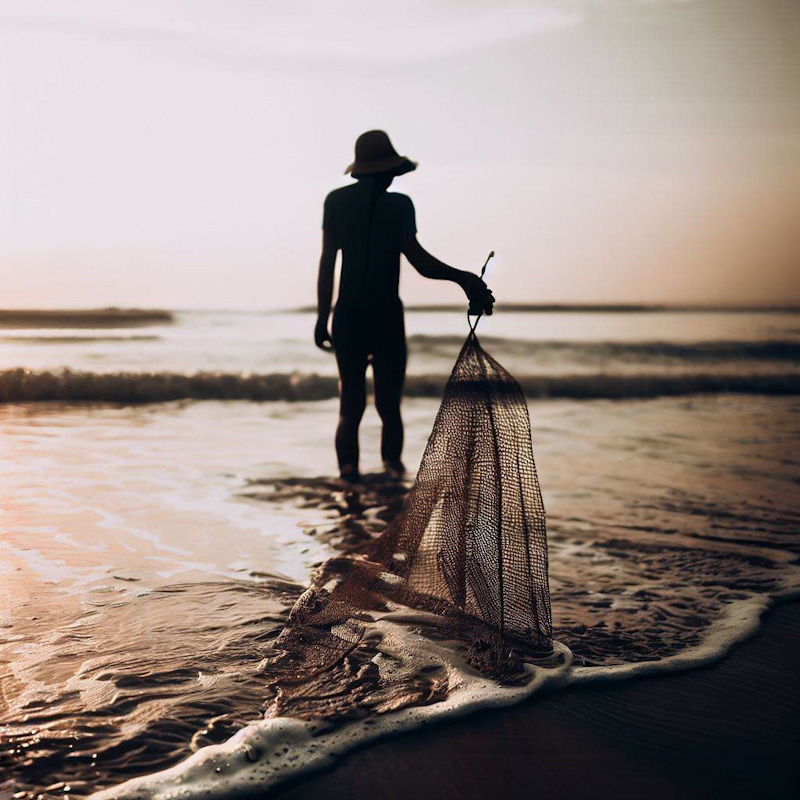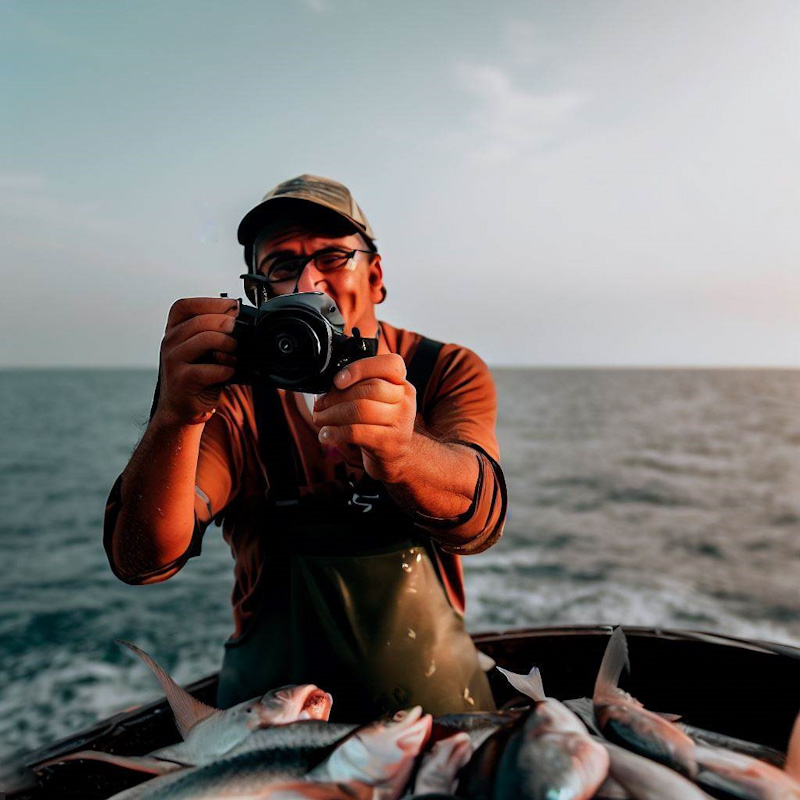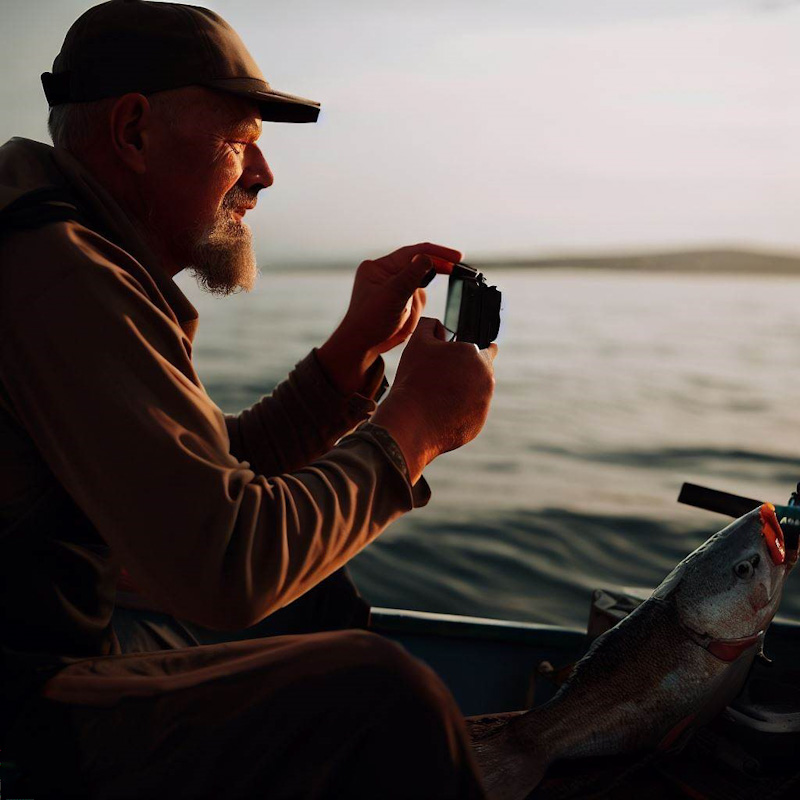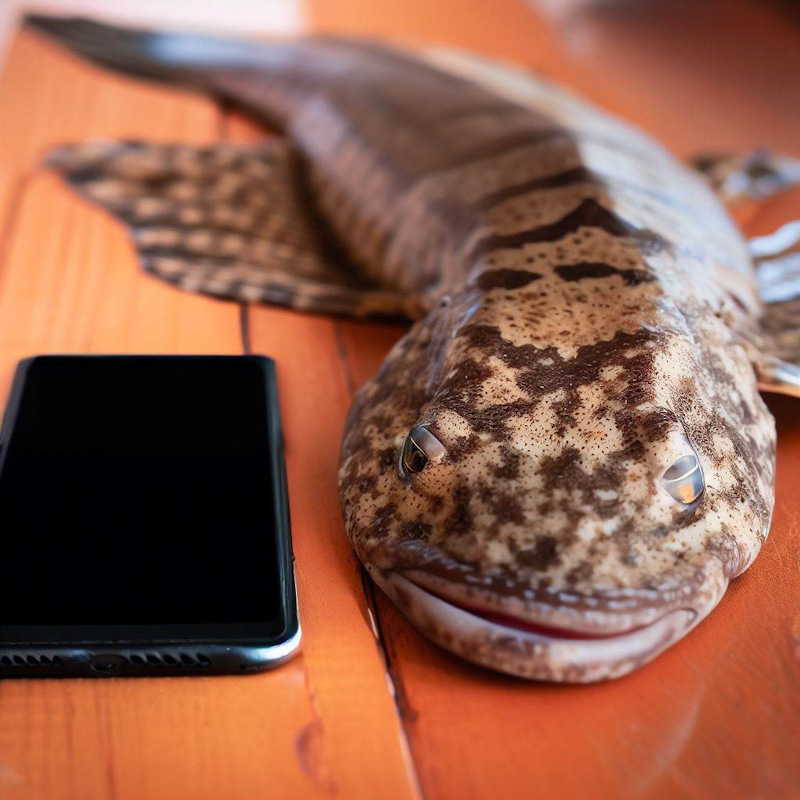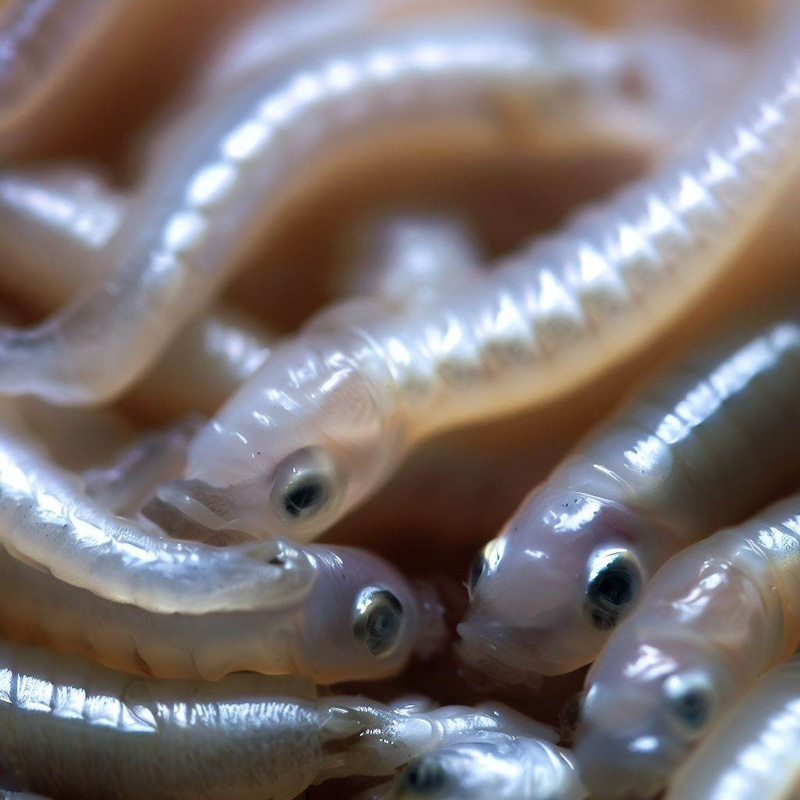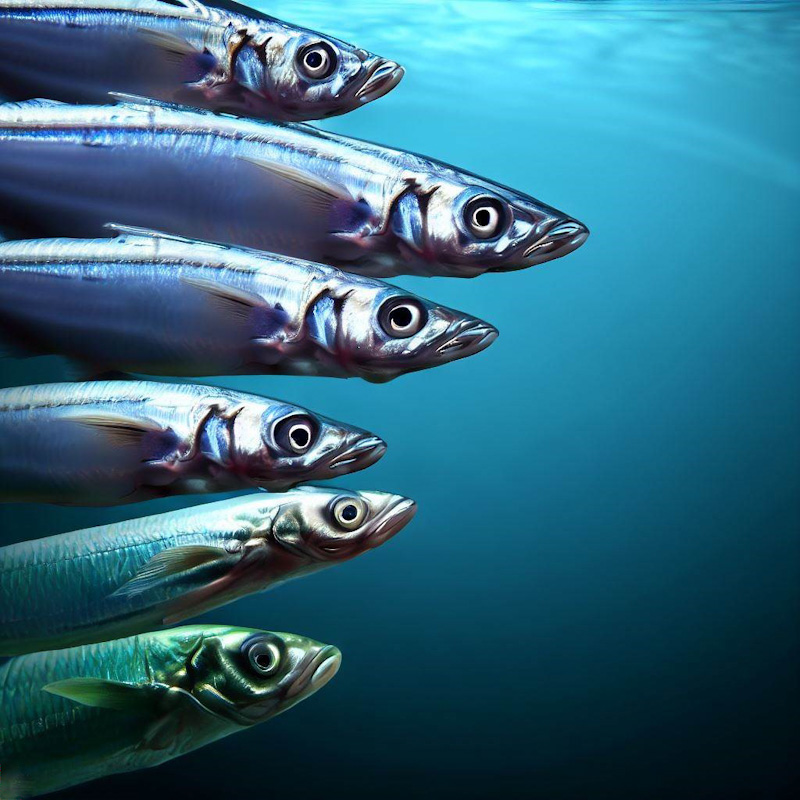Fisheries Science Terms and Concepts
- Fisheries Stock Assessments
- What is in fisheries stock assessments?
- Catch
- Effort
- Catch Per Unit Effort (CPUE)
- Fishing Gear
- Purse Seine
- Beach Seine
- Danish Seine
- Gill Net
- Dropline
- Squid Jig
- Trolling
- Handlining
- Pots & Traps
- Diver/Hand Collection
- Spearfishing
- Other Gear
- Fishery-Dependent Data
- Commercial Logbooks
- Commercial Observer Data
- Commercial Electronic Monitoring Systems
- Commercial Crew-Operated Data Recording System
- Information from Recreational Fisheries
- Life History Traits
- Maximum Sustainable Yield (MSY)
- Maximum Economic Yield (MEY)
- By-catch
- By-product
- Urchin Barrens
Fisheries Stock Assessments
Stock assessments synthesise information on the biology, fishing intensity, and catch rates of the target species, in addition to evaluating existing management strategies and predicting future stock status under current fishing practices. Stock assessments incorporate the available information into models to measure the current stock status and predict the future status of the target species under defined management regulations and fishing pressure. Thereby, stock assessments are developed as robust decision support tools that, with expert advice, can guide management decisions. The sustainable management of fisheries is reliant on the implementation of regular stock assessment schedule in which the current fishing practices and management controls can be assessed against the management objectives of the fishery.
Fishery stock assessments are essential to quantify the impact of fishing pressure on harvested species and sustainably manage the resource for all sectors both now and in the future. There is significant international, national and state effort focused on conducting sustainable fisheries practices for multiple users. Sustainable fisheries is one of the United Nations Sustainable Development Goals (UN SDG 14.4) and will be of focus in the UN Decade of Ocean Science for Sustainable Development (2021-2030). Globally, many fish species are over-exploited while population growth and environmental change threaten food security and increase demand on marine resources. Sustainable fisheries supported by robust science can help fill this changing demand on marine resources.
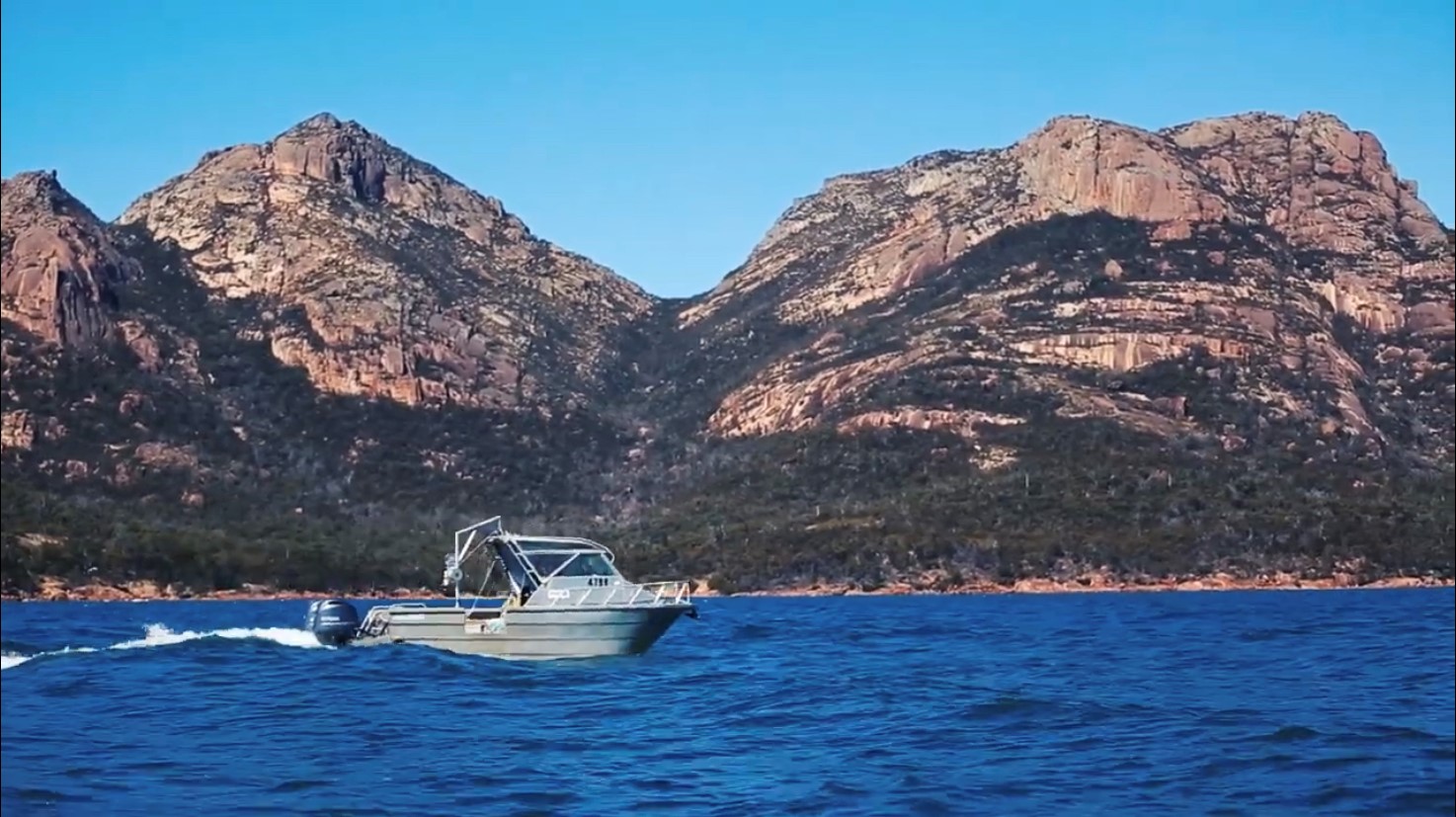
Through the Sustainable Marine Research Collaboration Agreement (SMRCA) collaboration with the Tasmanian Government, IMAS is committed to regularly undertaking stock assessments and conducting fisheries research to inform management decision-making for Tasmanian Fisheries.
What is in fisheries stock assessments?
While counting and assessing the biological traits of all individual fish within an entire population is impossible, a sub-sample, which is assumed to be representative of the overall population, can be used. Data on this sub-sample of the population in fisheries stock assessments can be obtained through both fisheries dependent (e.g., catch and effort) and independent (e.g., biological) data. The frequency of observations in the data is used in stock assessments to derive the characteristics of the fished population, such as the catch rate, abundance, age structure or size distributions. Expert scientific interpretation and knowledge is required to incorporate the sub-population data into fisheries assessment models and adapt the risk-based results to inform management objectives. Interdisciplinary scientists at the IMAS Fisheries and Aquaculture Centre conduct the research fisheries stock assessments for the Tasmanian Government.
Fisheries stock assessments use mathematical algorithms and statistics to identify trends in fished populations over time, such as in changes in abundance and size, that can be used to estimate abundance and predict the future impact of fishing activity on stock status. Given the temporal dimension of stock assessments, time series data is required to determine the exploitation status of fishing activities on targeted stock over a period. Therefore, stock assessments can be used with expert knowledge and interpretation to assess different management strategies over time on stock abundance and mortality within a risk-based framework with confidence intervals incorporated. The information on stock status in fisheries assessments is used to support management objectives. These management strategies are fishery and sometimes area specific and could include objectives such as maintaining a sustainable fishery or rebuilding depleted stocks.
Globally, many stock assessments for targeted species are restricted by limited data availability, such as the lack of catch and biological data for a species. Stock assessments incorporate models that assess current and future stock abundance relative to unfished populations against the fishing intensity. These models can range in complexity depending on the information available. Stock assessment models generally incorporate three data sources: abundance indices (usually as CPUE calculated from catch and effort), mortality estimates, and biological information (such as sex, size, age structure and maturity). The type of model used in a fishery stock assessment can be influenced by the data that is available to scientists. Many Tasmanian fisheries assessments incorporate both fisheries dependent data, such as catch and effort, and also fisheries independent data on population structure, including age and maturity. However, for some species in Tasmanian fisheries assessments there is still insufficient information to estimate stock status.
Researchers at IMAS are continuously evaluating and seeking to improve the mathematical algorithms in fisheries models, such as stock size, fishing mortality and age structure, to provide stakeholders with the best possible information. Robust analysis of risk and uncertainty is also conducted by IMAS researchers with each assessment. Additionally, IMAS researchers regularly seek to obtain data on information gaps and new methods for regulating quality control and assurance of data. It is a priority of IMAS fisheries scientists to disseminate stock assessment information transparently with the broad range of stakeholders in reports, advisory meetings, and on our fisheries assessment website.
Catch
Fisheries catch data is an important measure of fishing pressure on an exploited population. Additionally, catch data is also used as a sub-sample that characterises the response of the overall population of a targeted species to fishing pressure over time. Therefore, the catch data represents both the quantity of fish removed from the population and the overall status of a fished population in response to fishing. When integrated into a fisheries stock assessment the catch is combined with effort and biological data to inform management targets and predict the future status of targeted fish stocks. Interpreting temporal trends catch data requires consideration of numerous factors, including adjustments in TACC, fisheries closures, gear and vessel changes and market fluctuations, which also vary over time.
Total fishing pressure on a population includes both commercial and recreational catches. Harvest from the recreational sector is generally hard to quantify as recording and reporting catches is less frequently required from recreational fishers than the commercial sector. However, NR&E and IMAS also collaborate on numerous recreational fishing surveys to better quantify the recreational catch and understand the recreational fishing sector. Increasing the accuracy in recording recreational and commercial catch in stock assessments will assist IMAS researchers to provide robust science on which management decisions can be made to sustainably support the fisheries for the benefit of all sectors both now and in the future.
Effort
Fishing effort is the amount of resources required to obtain a catch and signifies the amount of fishing pressure placed on a stock. The Food and Agriculture Organisation (FAO) define this as “the amount of fishing gear of a specific type used on the fishing grounds over a given unit of time e.g. hours trawled per day, number of hooks set per day or number of hauls of a beach seine per day.”
Units commonly used to measure effort in the Tasmanian Fisheries Assessments are:
| Method | Units |
|---|---|
| Beach seine/purse seine | No. of shots |
| Graball/small mesh net | 100 m net hours |
| Drop-line | 100 hook lifts |
| Hand-line | Line hours |
| Fish trap | No. trap or pot lifts |
| Squid-jig | Jig hours |
| Spear | Fisher hours |
| Dip-net | Dip-net hours |
| Pots | Pot lifts |
For fisheries biologists the fishing effort is calculated to be reflect the fishing mortality, therefore, the intensity of fishing. However, for resource economists the fishing effort should reflect the cost of fishing. Consequently, economists will include the costs of fishing quotas, boat operations and market demand into calculations of fishing effort. There is an ongoing effort by IMAS and NR&E to better integrate biological and economic effort calculations in fisheries assessments.
Fishing effort can be nominal or standardised. Nominal fishing effort represent the fishing total pressure placed on a stock using a specific gear type over an explicit timeframe. However, it is common in Tasmania that fishers use multiple gear types and have different fishing efficiency and power. Therefore, it is often necessary to standardise the effort to account for these differences and obtain a more accurate measure representative of fishing mortality.
Fishing effort is one of the controls available to fisheries managers to maintain sustainable fisheries. By regulating fishing effort managers can reduce fishing intensity (pressure) and alter fishing behaviour.
Catch Per Unit Effort (CPUE)
Catch per unit effort (CPUE) is a mathematical method used to estimate the abundance (biomass) of a target species under exploitation (successive harvests). The CPUE is used to represent to the stock abundance (biomass) of a fished population and can be calculated from the catch and effort estimates reported by fishers. Although CPUE calculations rely on accurate catch and effort data, it often provides the best estimate possible of stock abundance.
Commercial fisheries are dynamic industries with variations in fishing behaviour catch and effort occurring in different fishing grounds at different times. The nominal CPUE calculated from catch and effort is not only influenced by catch and effort, but also by external factors such as extreme weather, technological advancements in fishing gear and vessels, and the expertise of the crew. Likewise, changes in the requirements for catch and effort reporting can have an affect on the calculated nominal CPUE. Therefore, the nominal CPUE calculations in many cases also undergo a standardisation process that aims to reduce the impact of external factors on the estimates of stock biomass.
What is CPUE Standardisation?
The CPUE standardisation process involves mathematically adjusting the nominal CPUE to remove the influence of factors that are unrelated to the measure of stock abundance, such as the fishing power, fishing time, location of fishing grounds and combinations of fishing gear used. Therefore, the standardised CPUE is a method to compare long-term trends in stock abundance by removing variability. For example, if a large commercial operator upgrades the fleet to vessels with high technological capabilities than the nominal CPUE will be influenced by the change in vessels and require standardisation to compare between the two fleets. Likewise, if the number and size of vessels (effort) changes over a specific timeframe than the CPUE will require standardisation to compare trends in stock abundance across the period.
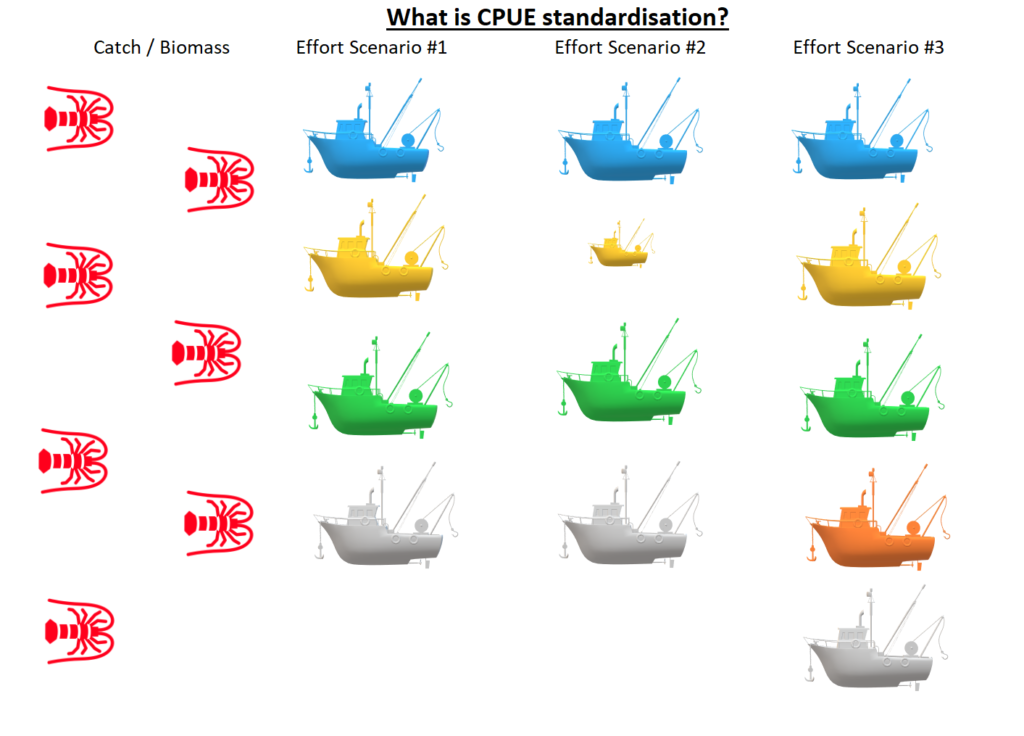
The CPUE standardisation process aims to remove the effects of factors unrelated to biomass (estimated from catch), such as changes in fishing behaviour, in the nominal CPUE. Here we present three scenarios where the nominal CPUE would give different values for biomass estimated from catch, irrespective of whether or not an actual change in biomass had occurred. The first scenario is a baseline where all fishers are operating comparable vessels and fishing behaviour is uniform and stable over time meaning that biomass estimates can be calculated. In the second scenario the vessels operated by the fishers has changed – the yellow boat has become smaller- and the fisher has changed behaviour focusing on near-shore catch. The third scenario has a new entrant into the fishery – the orange boat with little experience in the lobster fishery – which will be operated only three months annually and fish for scalefish the remainder of the year. The standardisation process is required to compare the long-term CPUE and calculate biomass estimates between these scenarios to account for the effect of vessel and area fished (scenario #2) along with the month fished and experience of the fishers (scenario #3) and other factors unrelated to the biomass.
Factors that can require CPUE standardisation include:
Fishing Time: Standardising fishing time involved removing factors that are not directly related to the productive time, which is the time spent landing or locating catch in the fishing grounds. The non-productive factors can include: the time lost for bad weather, time taken to reach fishing grounds, time spent preparing the fishing gear and handling the catch onboard.
Fishing Power: The fishing power is standardised by removing factors that aren’t directly related to the proportion of catch a specific fishing gear can take over a unit of time, which is dependent on the spatial coverage of the gear used and the density of fish in the area. Factors that are adjusted for include: advances in technology such as the use of sonar, improved fishing gear and faster vessels capable of travelling further with increased efficiency.
Location of Fishing Grounds: the CPUE standardised by location of fishing grounds will account for high fishing intensity and productivity at specific locations to infer spatially variable population density that can be subset, for example by age classes. Fishing tactics, such as the targeting of productive fishing grounds, and fishing strategy, including the choice of fishing grounds and species composition of fishing grounds, will be removed in the standardisation process to weight CPUE spatially. Fishing strategy is important to consider when fishers target multiple species, which are mostly driven by market prices. The resulting standardised CPUE represents not only to the abundance of the species, but also to the location it was caught, which is useful for exploited populations.
Multiple fishing gears: The use of multiple fishing gears with differing efficiencies and fishing power is difficult to adjust. In cases where good effort data is available for the different gear types, the standardised CPUE can be calculated for each gear type and compared. However, where insufficient effort data is available, one gear type may be used as a baseline for CPUE standardisation. However, due to the uncertainty, confidence testing of the standardisation methods should be undertaken to determine stock abundance.
Other factors: There are other factors which may be considered in CPUE standardisation including species interactions, moon phase and season.
The process of standardising CPUE is complex and requires experts to interpret the results in the context of the identified external factors that influence the estimation of stock abundance. Fisheries researchers at IMAS are committed to providing this expert information in the Tasmanian stock assessments we conduct. Furthermore, we actively seek to continuously improve our stock assessment models and CPUE standardisation algorithms where possible.
Fishing Gear
This section provides a general overview of common gear types. For specific regulations and requirements please refer to the NRE, Tasmania website.

Purse Seine
Beach Seine
Danish Seine
Gill Net
Dropline

Squid Jig
Trolling
Handlining

Pots & Traps
Diver/Hand Collection
Spearfishing
Other Gear
Purse seine fishing involves a large netting wall comprising of floats on the top and weights at the bottom of the net. Once the net wall is surrounding a school of fish the lines threaded through the bottom of the net are pulled to shut to form a “purse” that surrounds the fish and captures them in the net. This method is most effective when targeting fish species that form dense schools or shoals of fish in open water.
In Tasmania, the primary species targeted with purse seine gear is Common Jack Mackerel and Australian Sardine.
In beach seine fishing, fishers deploy a net around fish near the coast, often pulling the net ashore to land the catch. A beach seine net is shot from a boat or by fishers wading through the shallow water and held open by floats on the top and weights on the bottom.
In Tasmania, beach seine gear is used primarily to target Southern Garfish, East Australian Salmon and Yelloweye Mullet.
Danish seine fishing involves a net that is towed behind a boat. Danish seine nets have a convex shape giving the appearance of surrounding and encouraging catch to enter the net. It is most efficient in catching bottom or near-bottom dwelling (demersal) fish species that are sparsely dispersed or gathered in schools.
In Tasmania, Danish seine gear is primarily used to catch Tiger Flathead and Eastern School Whiting.
In gill net fishing, fishers create a vertical wall using a net with a mesh size designed allow the head of a fish to pass through the net trapping them by the gills when the body size is too large to pass through the net. Gill nets are shot with floats at the top and weights at the bottom and can be either fixed to one location by an anchor system or drift at a specific depth using the floats and weights. Gill nets vary in mesh sizes, lengths and heights depending on the jurisdiction they are deployed in and the species being targeted.
In Tasmania, the primary species targets with gill nets are Striped Trumpeter, Longsnout Boarfish, Jackass Morwong, Southern Sand Flathead, Blue Warehou, and Bastard Trumpeter.
A dropline is a series of baited hooks located on a long fishing line deployed vertically in the water column. Vertical lines with additional hooks, called snoods, may come off the dropline.
Striped Trumpeter is sometimes caught with droplines in Tasmania.
Squid jig fishing vessels have lights that attract squid to the shade of the vessel. Lines of jig lures are released from the vessel, often with a weight at the end of the line. Squid jig lures move in the water attracting squid to attach and trap the attacker. Automatic squid jigs move the lines to attract squid to attack the jig lures.
Squid Jigging is used to target Gould’s Squid and Southern Calamari in Tasmania.
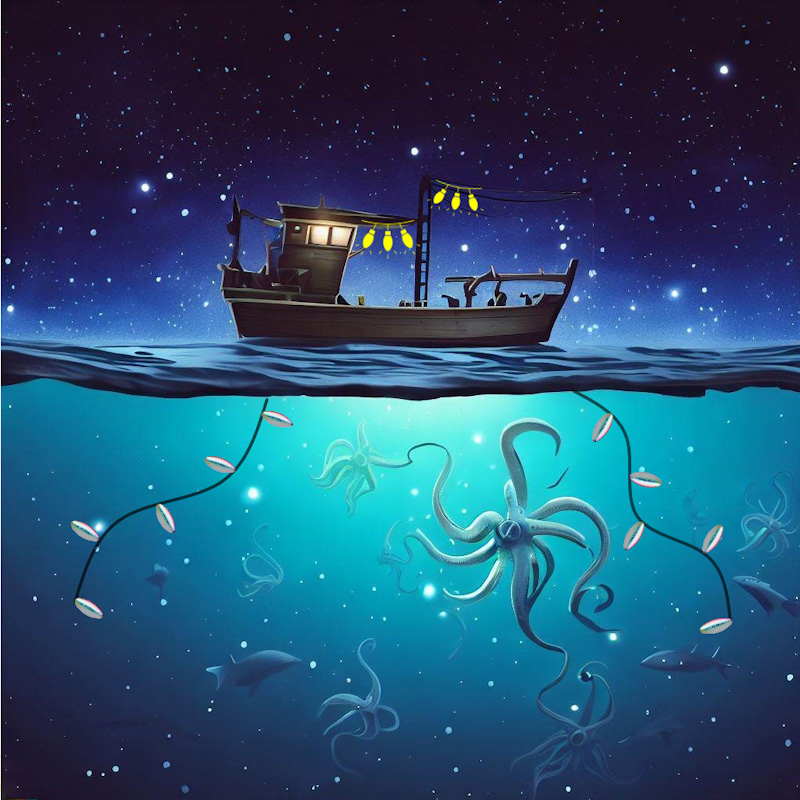
Troll fishing usually includes multiple baited fishing lines being moved through the water to attract a predator to attack and get hooked. Trolling usually occurs from a moving boat but moving a fishing lines side to side or slowing reeling lines in from a stationary position can also be considered troll fishing. Fishing vessels can be set up to avoid fishing lines tangling with outriggers, downriggers and pointer boards.
Troll fishing is used to primarily target Barracouta and Snook in Tasmania.
Handlining is a common and long-standing method of fishing that can either involve a fishing rod or line directly into the water. Fishing lines in handlining have baited hooks or lures attached.
In Tasmanian, species primarily caught with handlines are Purple Wrasse, Bluethroat Wrasse, Striped Trumpeter, Southern Sand Flathead, and Barracouta.
Baited pots and traps are deployed on the seabed at different depths depending on the target species.
In Tasmania, pots and traps are used to target Southern Rock Lobster, Giant Crab and Wrasse.
Diver/Hand collections includes numerous methods of harvesting including: SCUBA, free diving, hooka and shore-based hand collection.
Diver and/or hand collection is used to primarily harvest Abalone, Rock Lobster, Shortspined Sea Urchin, Longspined Sea Urchin and Periwinkles in Tasmania.
Hand spears and spear guns are used to catch scalefish, except bream and boarfish, while harvesting rock lobster or abalone with this gear is prohibited in Tasmania.
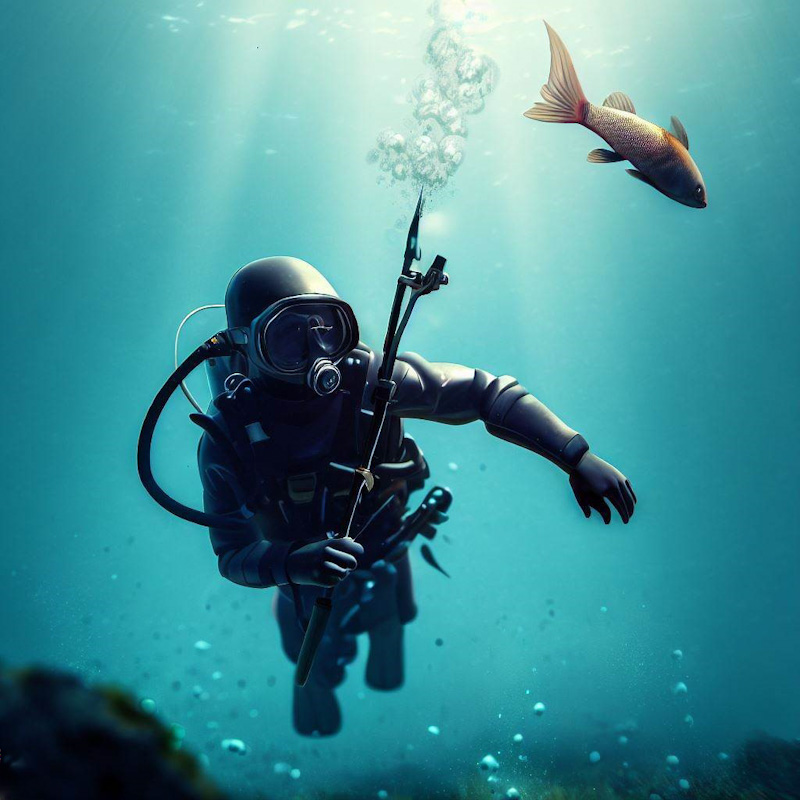
Other fishing gear that can be used includes dip nets and drop nets.
Fishery-Dependent Data
Fishery-dependent data is the information obtained through commercial and recreational fishing activities, such as the amount and type of catch and effort. Fishery-dependent data is essential information for conducting fisheries stock assessments, determining the status of fish stocks and assessing the sustainability of fish stocks. Therefore, the information obtained through fisheries-dependent data is important to the scientists analyzing it and the managers using the information in decision-making and sustainable fisheries management. Fishery-dependent data can be collected in a number of ways outlined below.
Commercial Logbooks
Fishing logbooks are records kept by fishermen on their fishing activities. Logbooks contain in its simplest form information such as the species and size of catch, location the catch was obtained from, and gear used. Commerical logbook data is used to calculate catch rates and long-term or seasonal fishing trends.
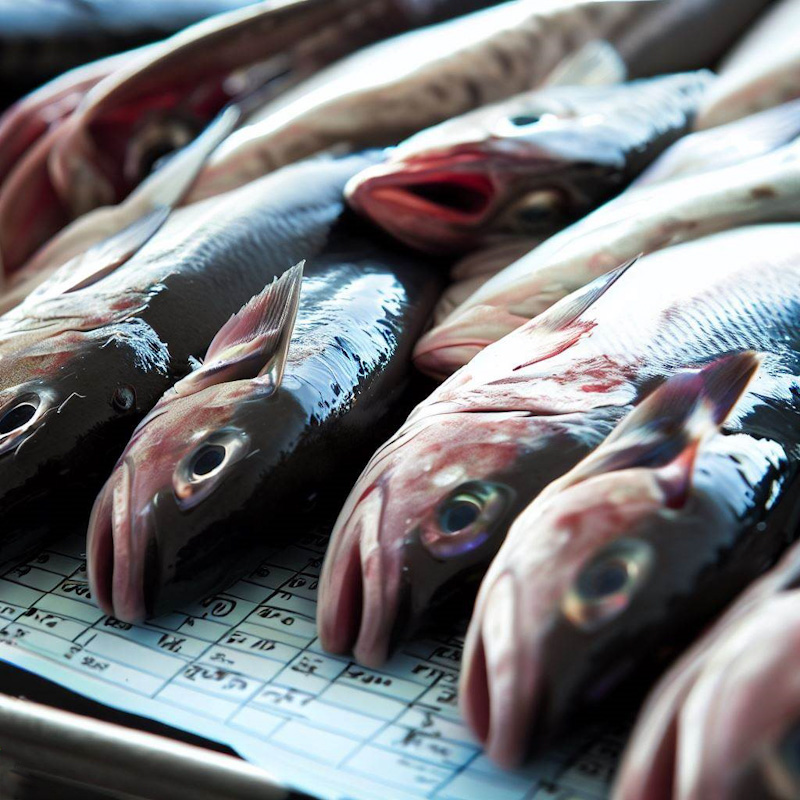
Commercial Observer Data
Observer data is obtained by trained, independent observers recording the fishing practices on commercial fishing vessels. Observer data is generally considered the most reliable of fisheries data but is also less abundant due to the availability and coverage of observers than fisher-reported data, such as logbooks. Observers record information on the species targeted and caught, the size and quantity of the catch, the location and time of the catch, fishing activities such as the gear and bait used to obtain the catch, compliance with regulations, as well as the species and fate of any by-catch or by-product. The information on fishing compliance, activities, exploitation and ecosystem interactions provided by observers supports the science and management of sustainable fisheries.
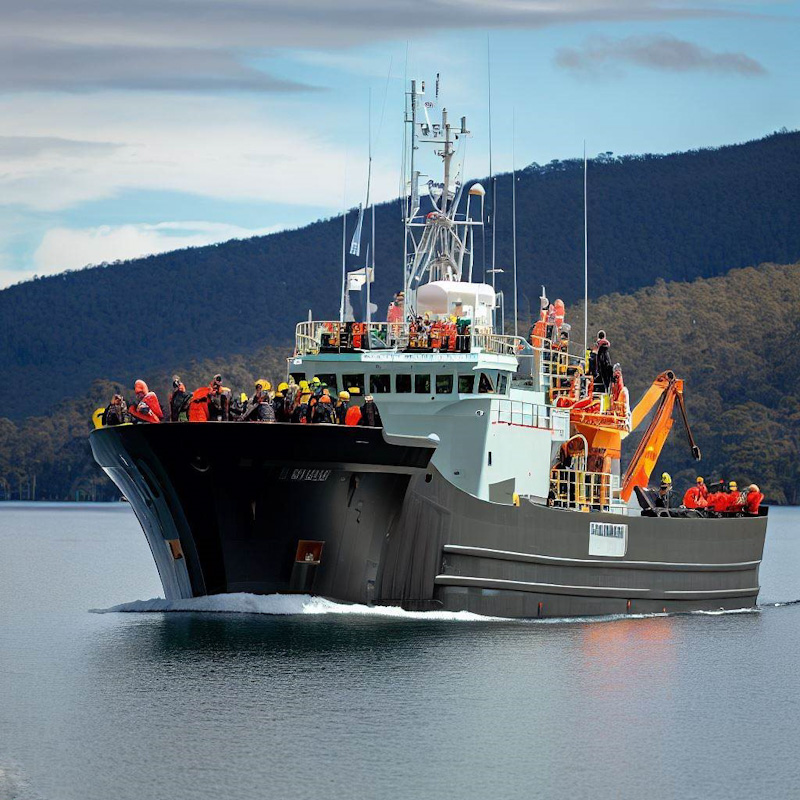
Commercial Electronic Monitoring Systems
Electonic monitoring (EM) systems are used in some commercial fisheries to replace or compliment observer data. A network of cameras and sensors are used in EM systems on fishing vessels to record the species caught, quantity caught, size of catch, gear type, effort, by-catch and by-product, and processing activities. Benefits of EM systems include near real-time data, extensive and independent fishery data collection, compliance monitoring and cost-efficient operational costs once established. The high initial startup costs are a limitation to the widespread use of EM systems.
As of June 2020, the Australian Fisheries Management Authority (AFMA) have implemented EMS to validate logbook data in the Commonwealth managed Eastern Tuna and Billfish Fishery (ETBF), Western Tuna and Billfish Fishery (WTBF), midwater trawl sector of the Small Pelagic Fishery (SPF), and Gillnet Hook and Trap (GHAT) sector of the Southern and Eastern Scalefish and Shark Fishery (SESSF) (AFMA, 2020).
EM systems integrate technological advances that automate the reporting process in fisheries, such as automated species identification. At IMAS, we are investigating how these emerging technologies can be applied in a cost-effective manner for small-scale fisheries.
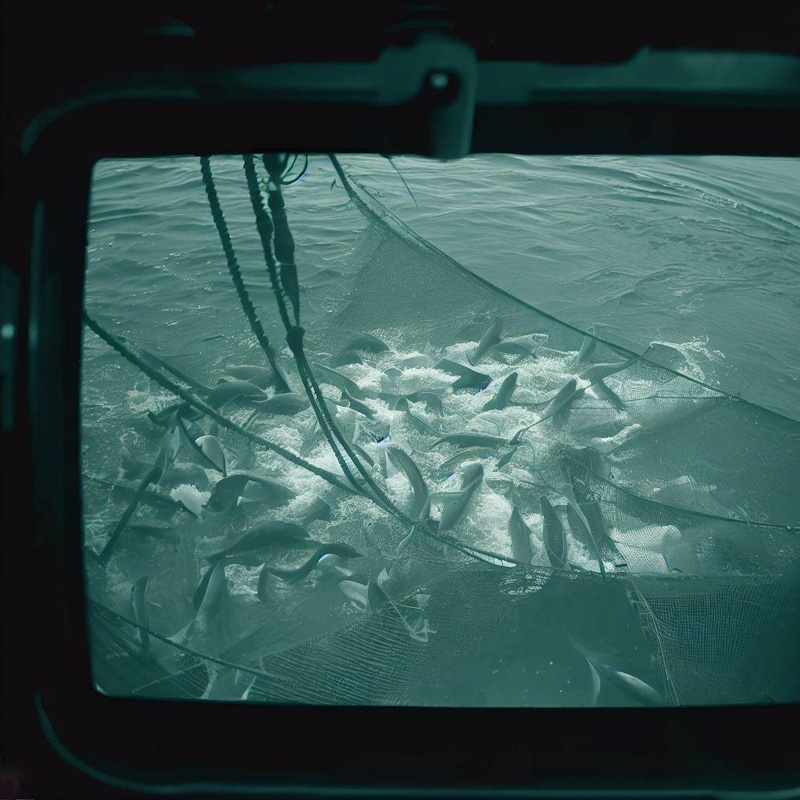
Commercial Crew-Operated Data Recording System
Crew-Operated Data Recording System (CODRS) engages fishermen to take images or footage of catch in combination with a vessel tracking device from which species, length-composition, and location data can be collected. CODRS can reduce the reporting demand on fishers and increase the accuracy of data collection by automating the catch reporting process from the images. However, this assumes that the images taken are of a quality able to be analyzed in a consistent manner. CODRS catch reporting utilizes some of the technologies and artificial intelligence (AI) learning techniques used in more complex EM systems in an approach that is more accessible to smaller-scale commercial and recreational fisheries. Researchers at IMAS are investigating the use of emerging imaging and AI technologies to automate catch reporting or reduce reporting demand on fisher in commercial fisheries.
Information from Recreational Fisheries
The recreational fishing community is an important sector in stock assessments and the sustainable management of fisheries the collection of information and data. Recreational fisheries also contribute to the economy and culture of coastal communities in Tasmania. IMAS researchers highly value collaborations with the recreational fishing community they provide information that benefits science, the sustainable management of the fishery, and all users of Tasmania’s fisheries resources.
Globally, recreational fishing data is being increasingly included in stock assessments. The inclusion of recreational fishing information into stock assessments that use data-poor models (catch only models) can impact the outcomes and recommendations to management (Griffiths and Fay, 2015). However, the limited availability and precision of recreational fishing data impedes the extent to which it can be used in stock assessments. A range of research projects are conducted by IMAS that aim to gather some of the extensive information the recreational fishing community has to improve our understanding of stocks and the science underpinning fisheries management. IMAS also research technologies to improve knowledge exchange with the recreational fishing community, such as apps.
Recreational fishing research programs conducted by IMAS include:
Survey of Recreational Fishing in Tasmania
Every five years, IMAS conducts a recreational fishing survey, commissioned by NRE, Tas, which collects information across Tasmania about how many people go recreational fishing, how often they fish, where they fish and what they catch.
2017/18 Recreational Fishing Snapshot
2017/18 Survey of Recreational Fishing in Tasmania
Rock Lobster and Abalone Recreational Fishing Survey
Annual surveys of recreational rock lobster and abalone fishing has been conducted by IMAS since the late 1990s. These surveys collect information regarding how many people go fishing or diving for rock lobster and abalone, how often and in what regions, and their catch and success rates. The surveys are funded from recreational fishing licence fees and involve a large number of Tasmanian recreational licence-holders keeping logbooks and conducting phone interviews.
Tasmanian Recreational Rock Lobster and Abalone Fisheries: 2021/22 Fishing Season
Life History Traits
Life history traits are used in stock assessment provide biological information on the species being assessed that is essential to developing quantitative models of stock status and identifying sustainable exploitation pressure. Biological information used in stock assessments includes: maximum size, growth rate, age at sexual maturity, the number of eggs a female can produce (Fecundity), and the spawning duration and interval. The biological information is used in fisheries models to estimate the age structure and reproductive capacity of the stock. Life history traits are also used by fisheries scientists to investigate the minimum size limits, determine appropriate management regions, and assess performance of catch rules to support managers to sustainably manage fish stocks.
Maximum Sustainable Yield (MSY)
The maximum sustainable yield (MSY) is the maximum catch that can be harvested (fishing intensity) indefinitely without depleting a population below the sustainable capacity. Over a century ago, the MSY concept was established as a management target, however, over time it has evolved to a reference limit point for biomass depletion. In the 1970s, it became clear that management under an MSY model balanced populations delicately between sustainable and over-exploited. Consequently, MSY is still used in fisheries management globally and is features in the United Nations sustainable development goals Indicator 14.4.1 – “Proportion of fish stocks within biologically sustainable levels”. However, a movement toward consideration of ecosystem-based management with quantified uncertainty and risk-based assessment has recently occurred. The MSY can be calculated from catch and effort data in production models or from biological data in age-structured models.
The density dependency principal assumes that resource competition between individuals will decline with increased catch, which will promote increased reproduction and survival of the unfished population, resulting in increased rates of population growth until the MSY is reached. The status of a population relative to the MSY is related to both the catch and effort. If the catch is less than the MSY due to low effort in the fishery the resource is underfished. Conversely, if the catch is greater than the MSY due to high effort in the fishery the resource is overfished.
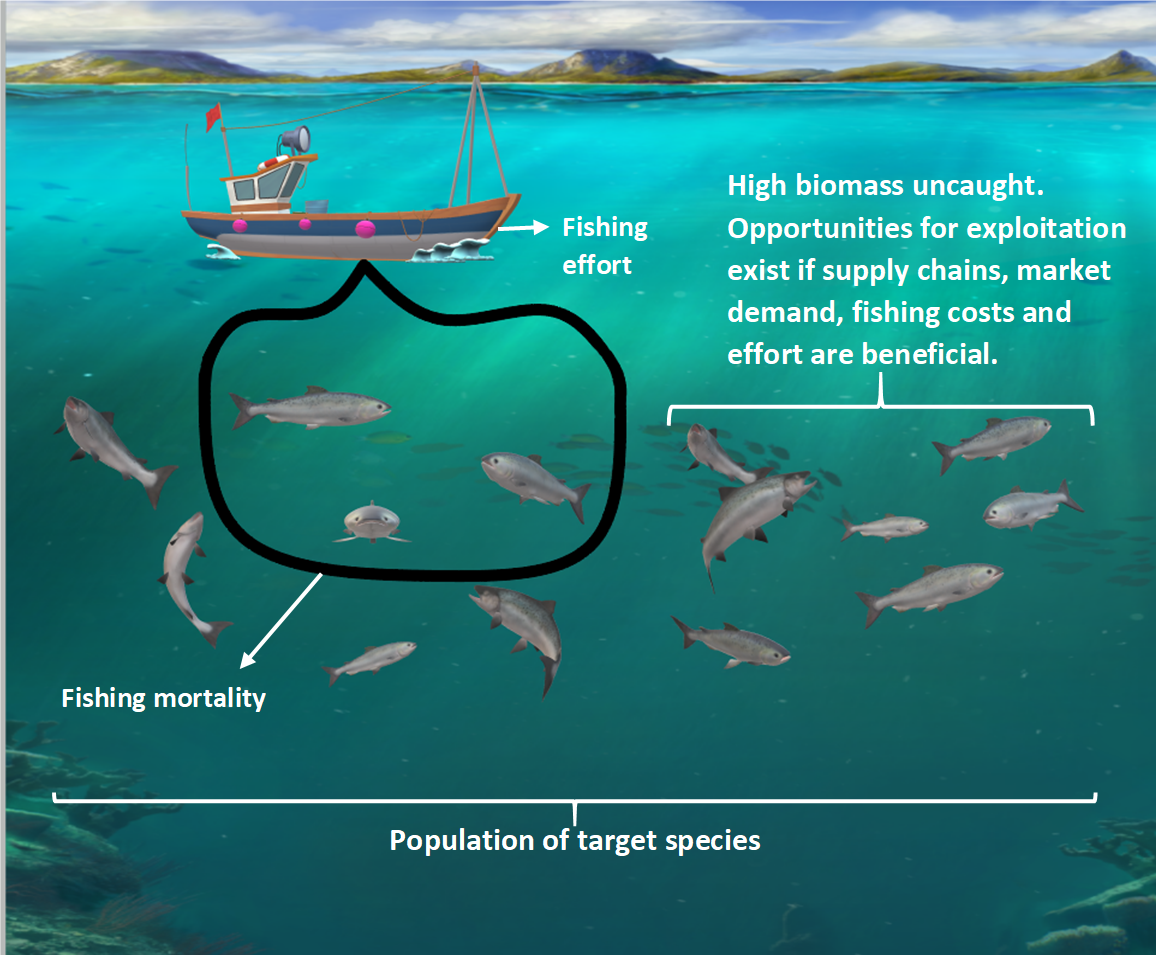
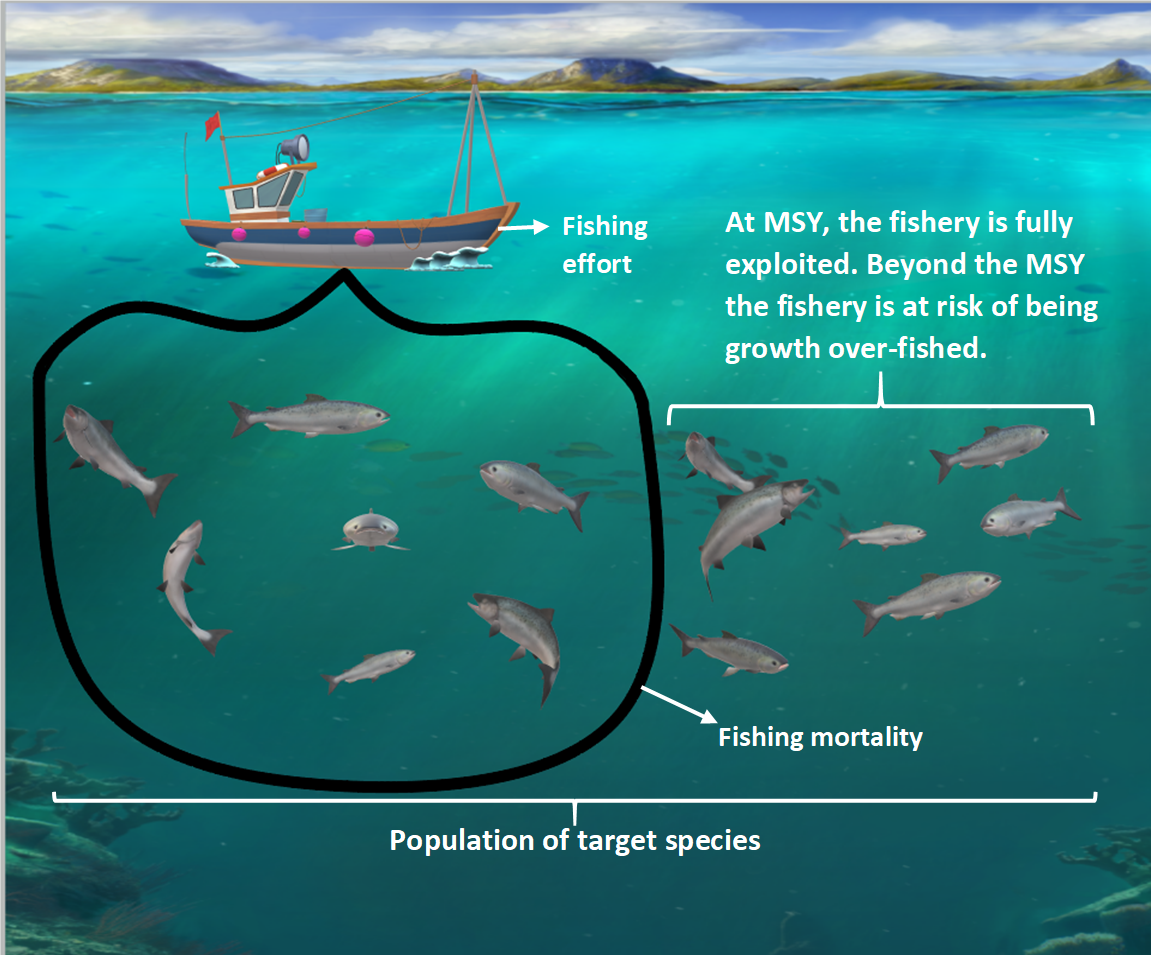
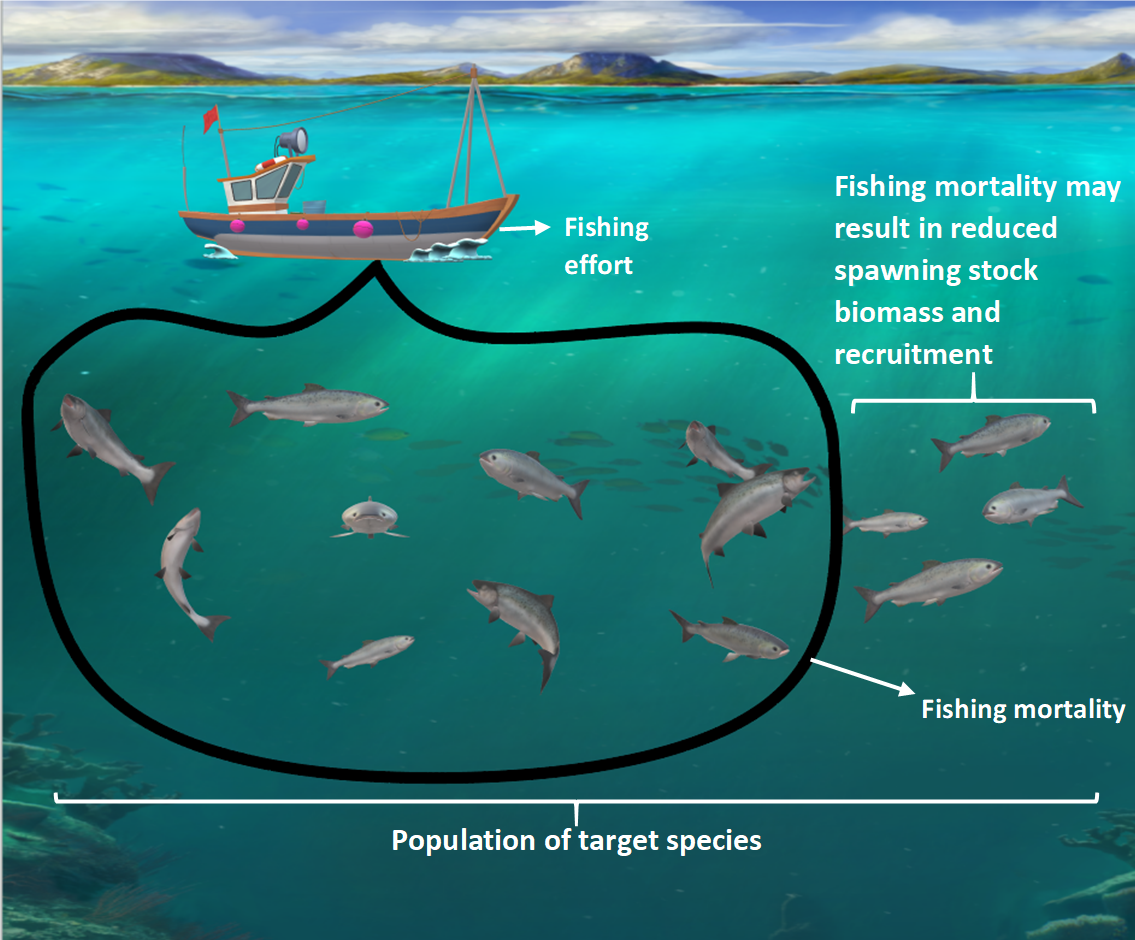
Maximum Economic Yield (MEY)
The maximum economic yield (MEY) aims to maximise the economic benefit of a fishery by considering the cost of landing catch and the value of the resource within sustainable harvesting levels. The MEY is determined from identifying the catch level that achieves the maximum profit margin (surplice revenue known as the resource rent) above the total cost of fishing. As the MEY aims for catch to be within sustainable levels, the MEY is often a catch limit below the MSY that obtains the maximum surplice of revenue relative to the costs of obtaining it. Consequently, the MEY usually results in lower intensity fishing that is beneficial to the ecosystem and economy. The MEY approach to resource management, however, is only successful in regulated fisheries where effort can be limited.
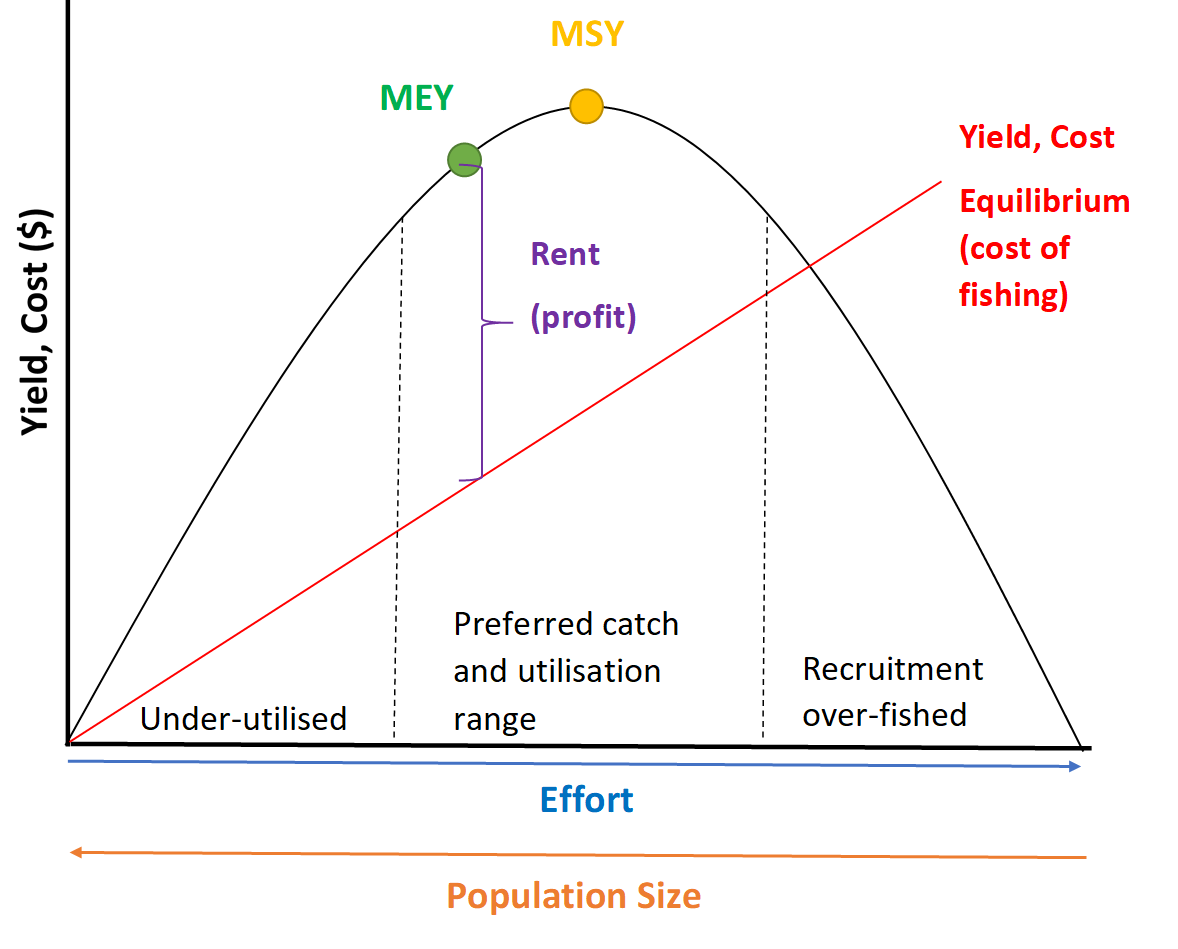
By-catch
Bycatch refers to the accidental capture of non-target species during fishing operations. This can happen when fishermen are targeting a certain species, but other marine animals get caught in the fishing gear or nets. Bycatch is a major issue for the fishing industry because it can result in the unnecessary killing or injury of species that are not being targeted, leading to ecological imbalances and a waste of resources. The National Policy on Fisheries Bycatch was endorsed by the Ministerial Council on Forestry, Fisheries and Aquaculture in April 1999.
There are international treaties and conventions addressing bycatch such as the “Code of Conduct for Responsible Fisheries” 1995 which guides responsible fisheries management practices.
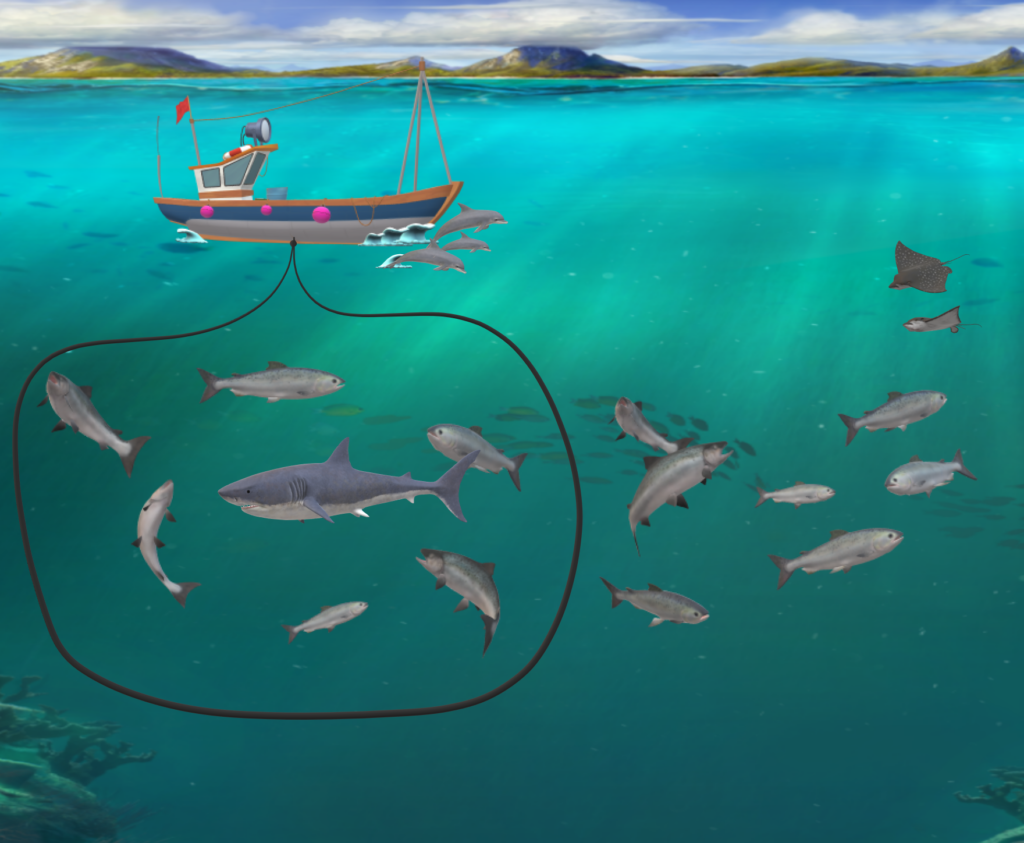
By-product
In the context of fisheries, by-product is any catch that is not the main target of the fishing activity. In most forms of fishing some species which are not the main target species will be taken. Where this non-targeted catch is commercially valuable and is retained by fishers it is termed by-product. For instance, in the rock lobster fishery, octopus may be caught and kept (subject to specific restrictions), but the primary objective is to catch rock lobster.
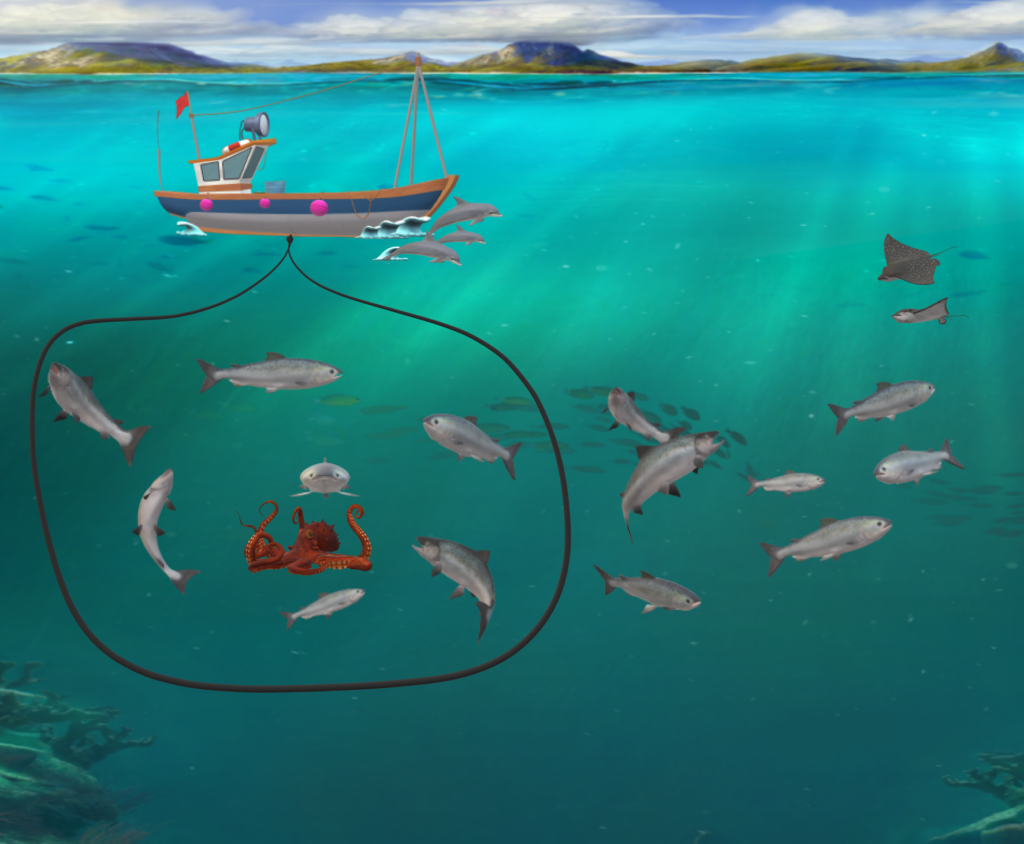
Urchin Barrens
An urchin barren is an area in the ocean where sea urchins have caused significant damage to the kelp forest ecosystem. Kelp forests are important habitats for a wide variety of marine species, including fish, crustaceans, and marine mammals. Sea urchins feed on kelp, and when their populations become too large, they can overgraze the kelp forests, leaving barren areas devoid of vegetation.
Urchin barrens can have significant ecological and economic impacts. Without the presence of kelp, the habitat for other marine species is reduced, which can lead to declines in fish populations and other species that rely on the kelp forest ecosystem. Urchin barrens can also have economic impacts, as kelp forests are important for commercial and recreational fishing, and the loss of kelp can result in the loss of these industries.
Efforts to restore kelp forests and prevent urchin barrens include the removal of excess sea urchins through targeted fishing or other management measures such as ensuring urchin predator populations are maintained.
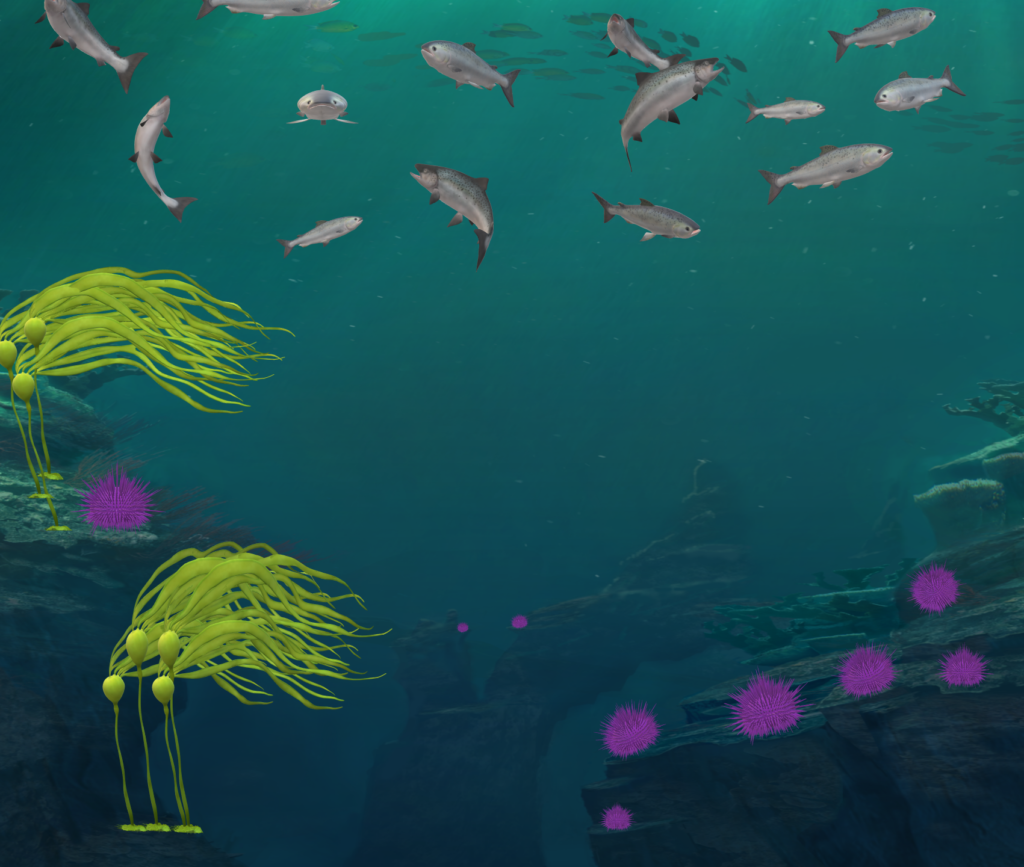
Thank you for visiting our Science Information Page.
We are continually adding more information to this page. Please check back again soon.



